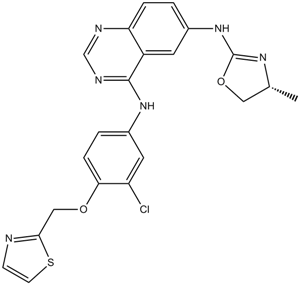EGFR
EGFR (epidermal growth factor receptor) is the cell-surface receptor of its specific ligands, including epidermal growth factor and TGFα (transforming growth factor α) and is a receptor tyrosine kinase.
Products for EGFR
- Cat.No. Product Name Information
-
GC36044
FIIN-3
FIIN-3 is an irreversible inhibitor of FGFR with an IC50 of 13.1, 21, 31.4, and 35.3 nM for FGFR1, FGFR2, FGFR3 and FGFR4, respectively.
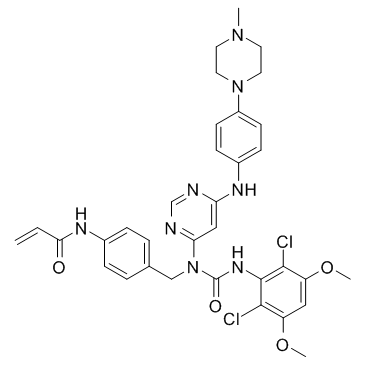
-
GC16737
Gefitinib (ZD1839)
Gefitinib (ZD1839), is a potent EGFR-TKI (EGFR tyrosine kinase inhibitor)
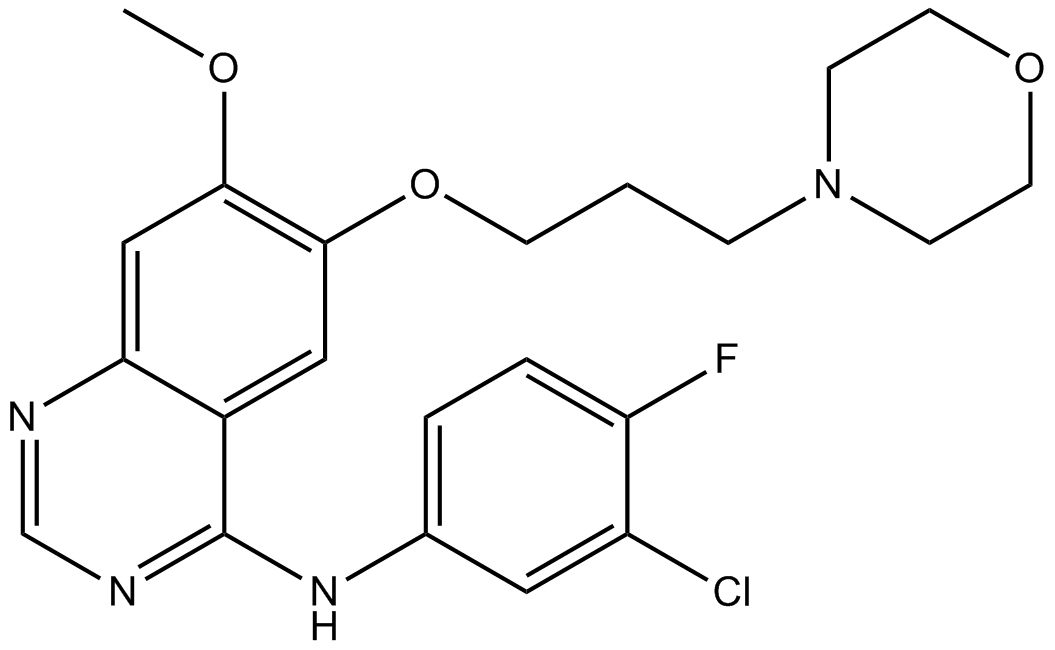
-
GC60868
Gefitinib D8
Gefitinib D8 (ZD1839 D8) is a deuterium labeled Gefitinib. Gefitinib is an EGFR tyrosine kinase inhibitor, with IC50 of 2-37 nM in NR6wtEGFR cells.
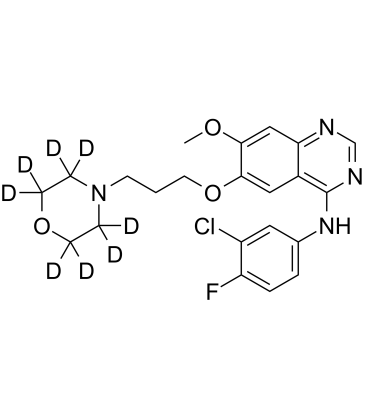
-
GC14295
Gefitinib hydrochloride
An EGFR inhibitor
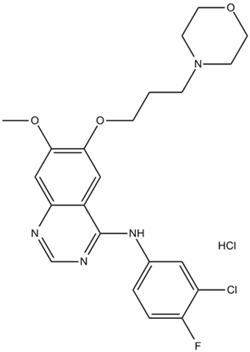
-
GC19509
Gefitinib-based PROTAC 3
A VHL-recruiting PROTAC
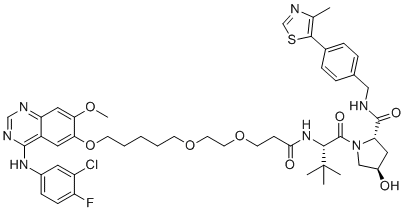
-
GC14102
Genistein
Genistein is an isoflavone belonging to the flavonoid group of compounds and is found in a number of plants.
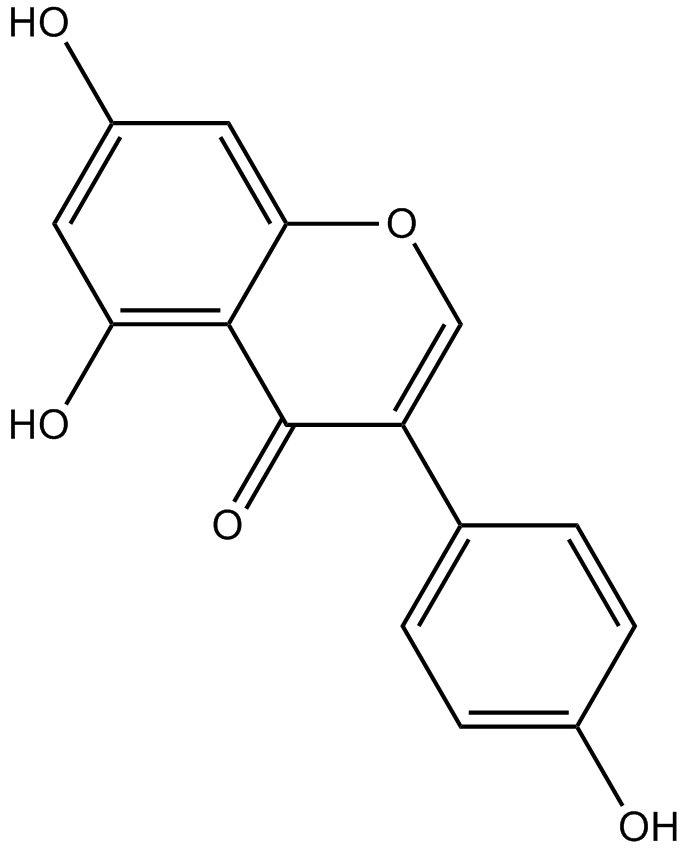
-
GC15927
GW 583340 dihydrochloride
dual EGFR/ErbB2 tyrosine kinase inhibitor
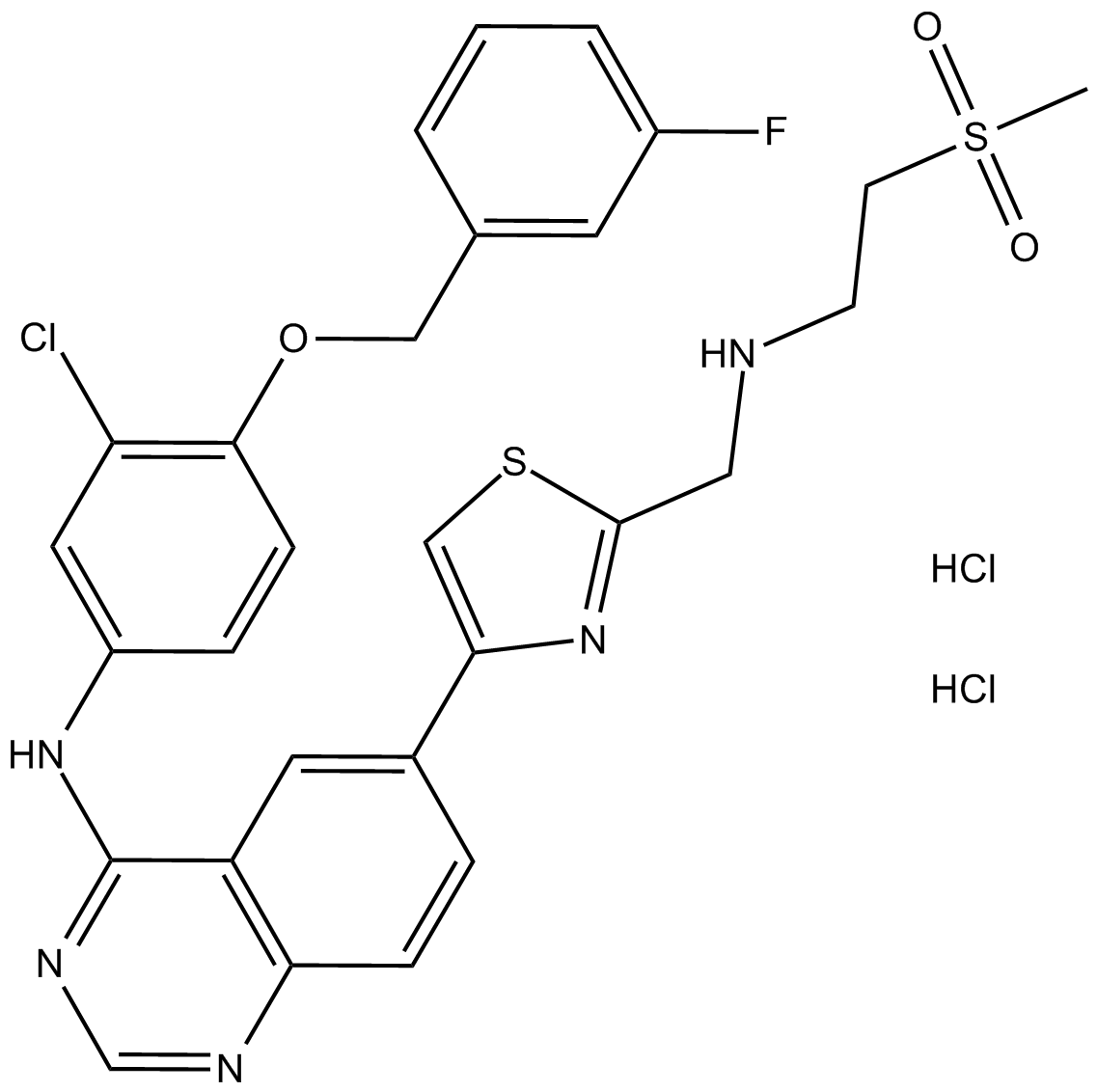
-
GC15674
HDS 029
HDS 029 (compound 29) is a potent tyrosine kinase inhibitor with IC50s of 0.3, 1.1, 0.5, 2.5, 24 nM for erbB1, erbB2, erbB4, EGF, HER, respectively.
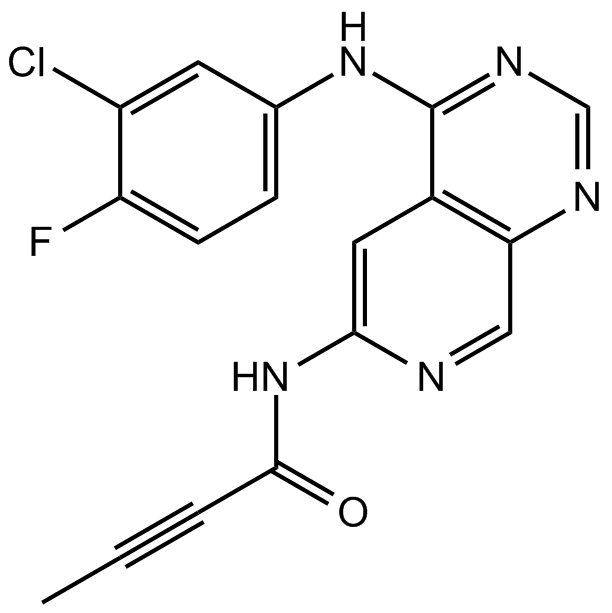
-
GC14259
HKI 357
irreversible inhibitor of ErbB2 (HER2) and EGFR
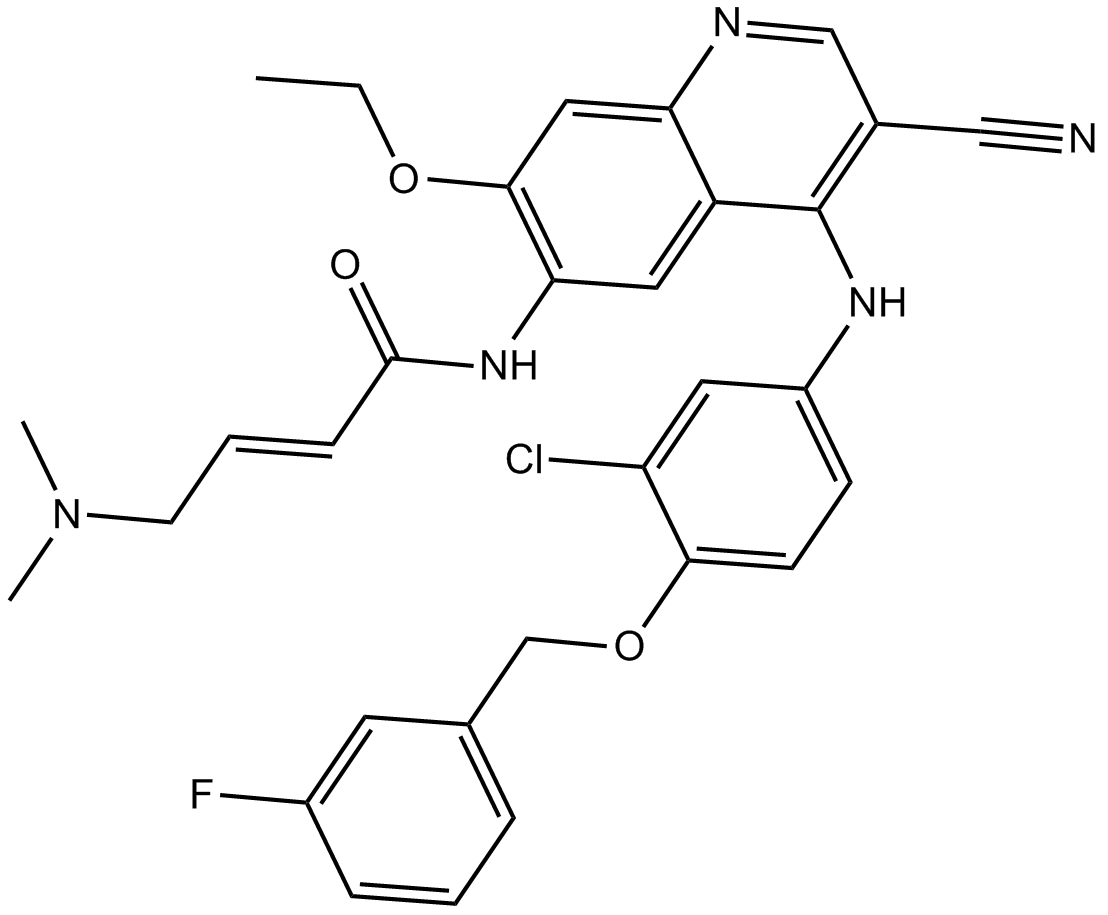
-
GC33053
HS-10296 hydrochloride
Almonertinib (HS-10296) hydrochloride is an orally available, irreversible, third-generation EGFR tyrosine kinase inhibitor with high selectivity for EGFR-sensitizing and T790M resistance mutations. HS-10296 hydrochloride shows great inhibitory activity against T790M, T790M/L858R and T790M/Del19 (IC50: 0.37, 0.29 and 0.21 nM, respectively), and is less effective against wild type (3.39 nM). HS-10296 hydrochloride is used for the research of the non-small cell lung cancer.
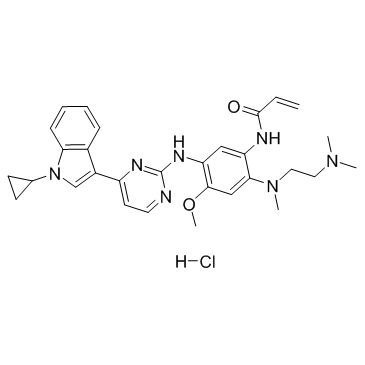
-
GC17982
Icotinib
EGFR tyrosine kinase inhibitor
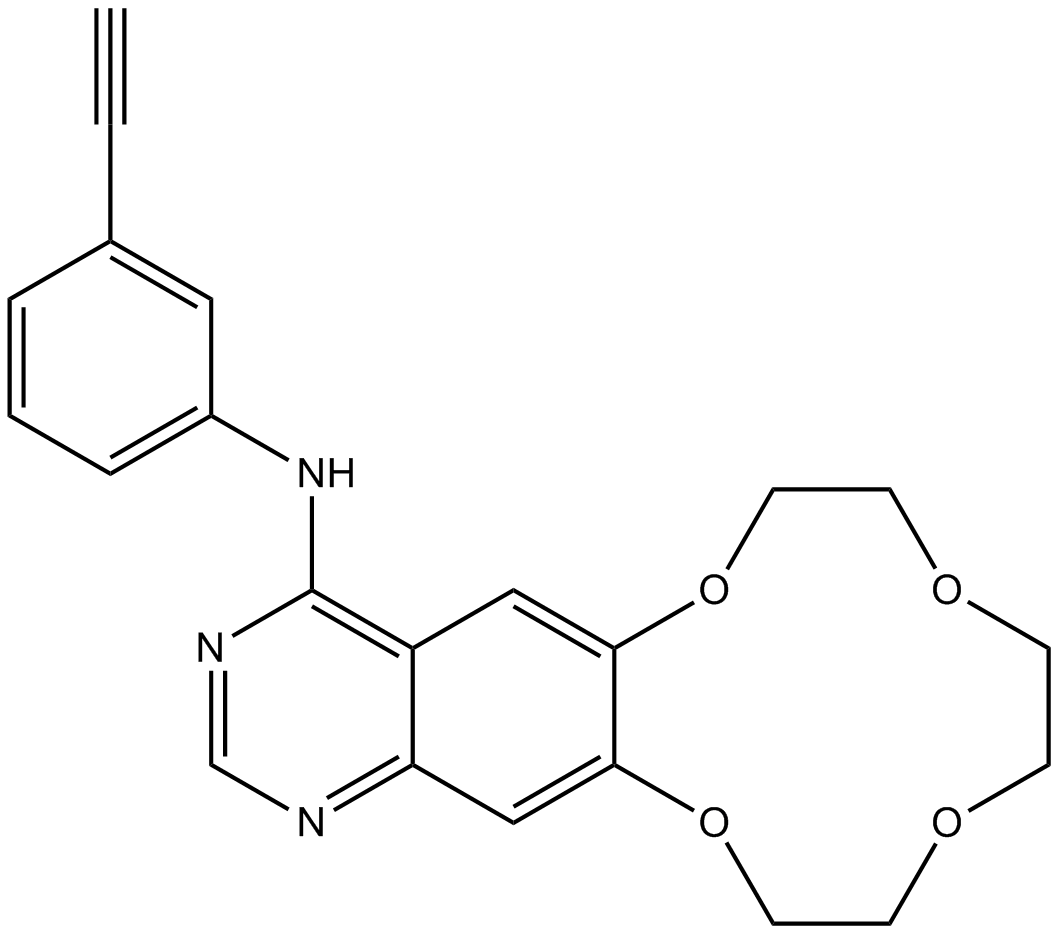
-
GC16244
Icotinib Hydrochloride
An EGFR inhibitor
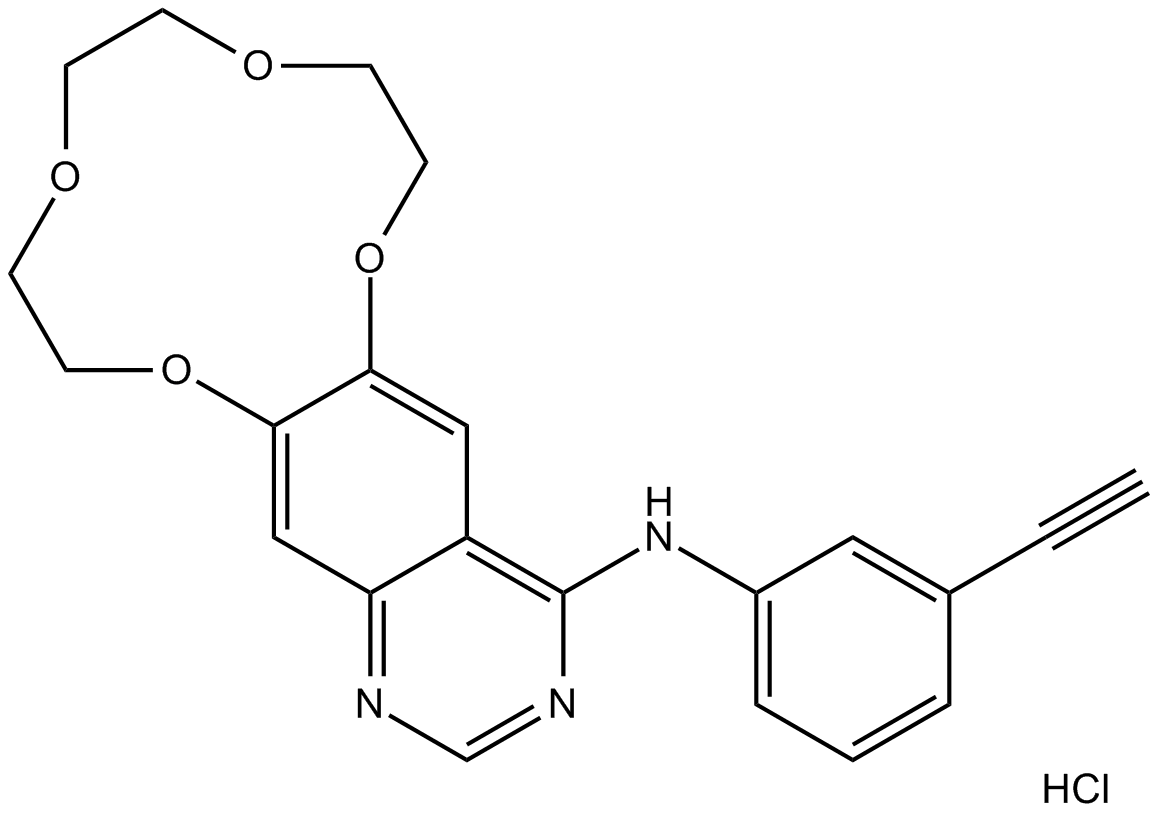
-
GC16869
Ixabepilone
A broad-spectrum anticancer agent
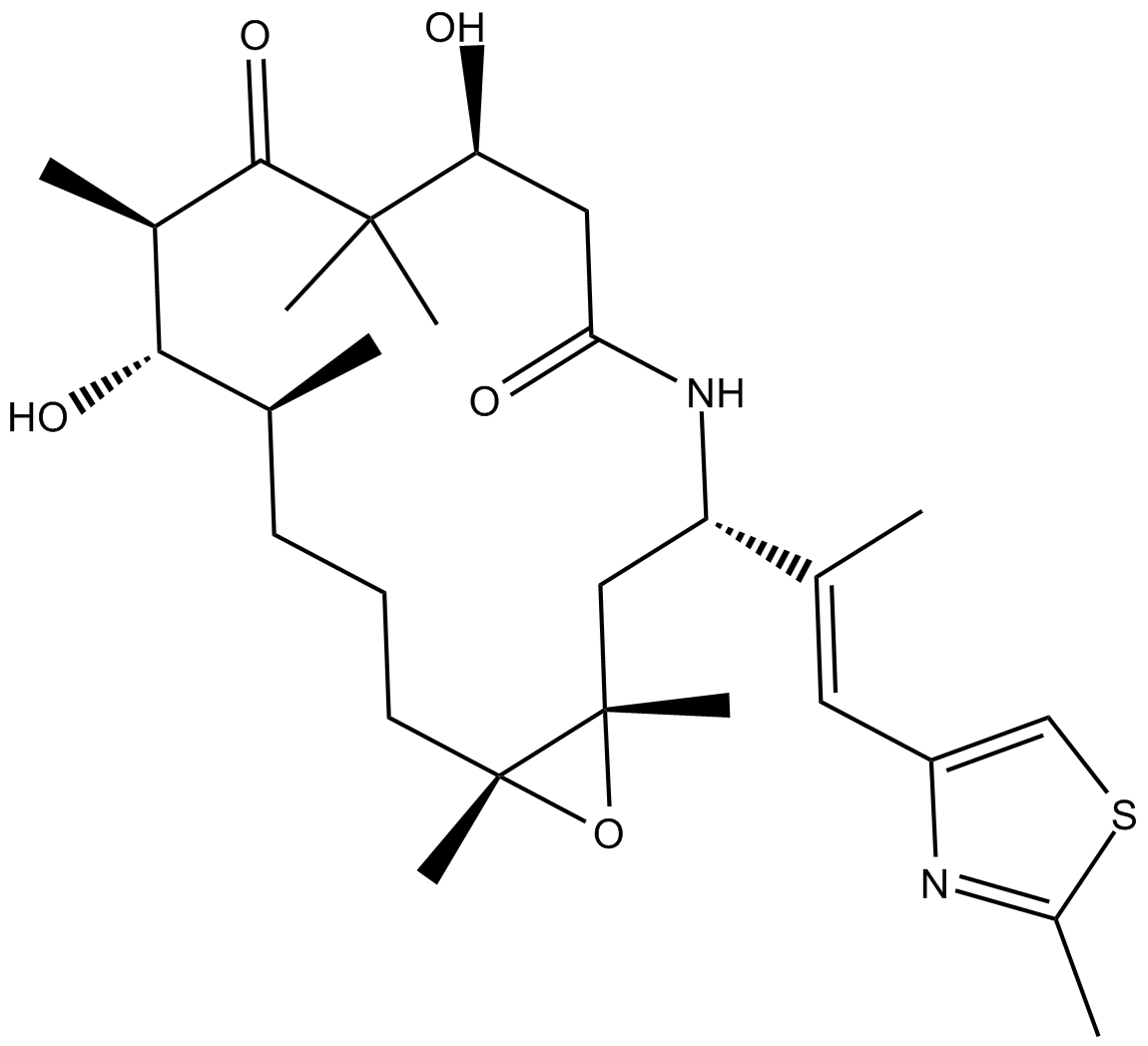
-
GC50706
JBJ-03-142-02
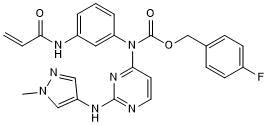
-
GC62632
JBJ-04-125-02
JBJ-04-125-02 is a potent, mutant-selective, allosteric and orally active EGFR inhibitor with an IC50 of 0.26 nM for EGFRL858R/T790M. JBJ-04-125-02 can inhibit cancer cell proliferation and EGFRL858R/T790M/C797S signaling. JBJ-04-125-02 has anti-tumor activities.
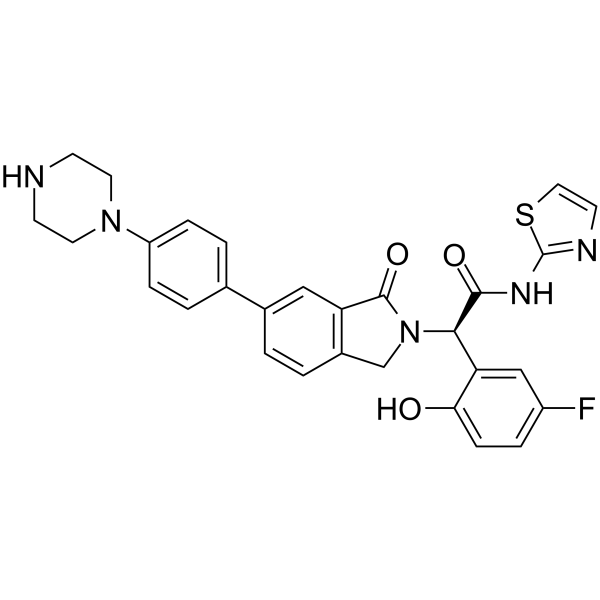
-
GC67690
JBJ-09-063 hydrochloride
JBJ-09-063 hydrochloride is a mutation selective allosteric EGFR inhibitor
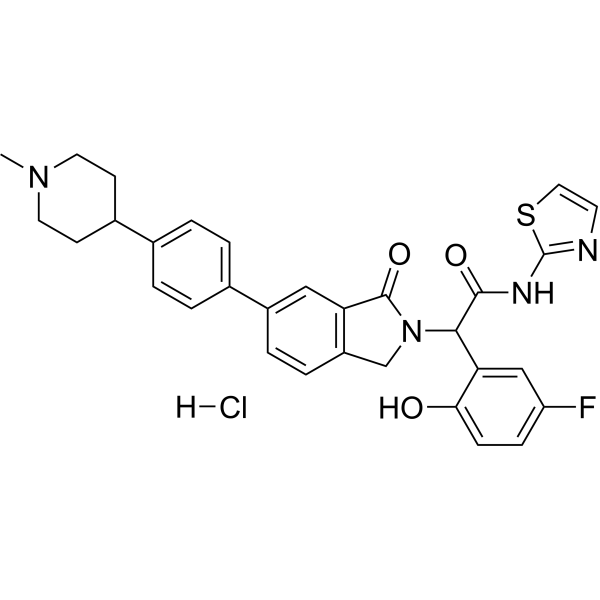
-
GC67860
JBJ-09-063 TFA

-
GC65436
JND3229
JND3229 is a reversible EGFRC797S inhibitor with IC50 values of 5.8, 6.8 and 30.5 nM for EGFRL858R/T790M/C797S, EGFRWT and EGFRL858R/T790M, respectively. JND3229 has good anti-proliferative activity and can effectively inhibit tumour growth in vivo. JND3229 can be used in cancer research, especially in non-small cell carcinoma.
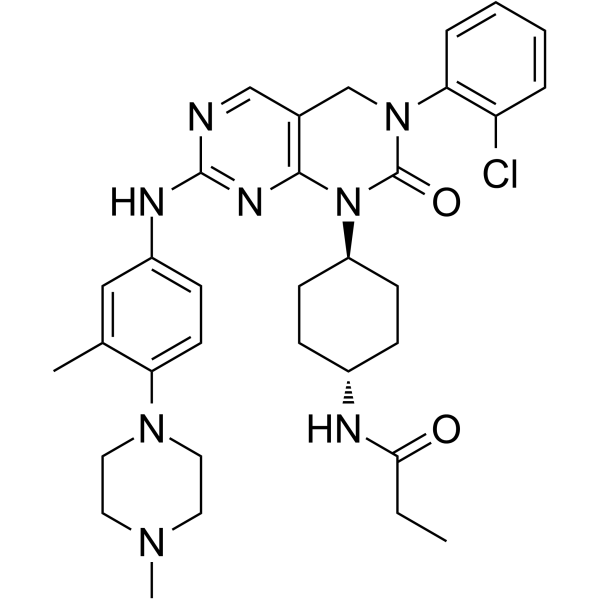
-
GC18030
JNJ 28871063 hydrochloride
ErbB receptor family inhibitor

-
GC44085
L-Sulforaphene
L-Sulforaphene, isolated from radish seeds, exhibits an ED50 against velvetleaf seedlings approximately 2 x 10-4 M. L-Sulforaphene promotes cancer cells apoptosis and inhibits migration via inhibiting EGFR, p-ERK1/2, NF‐κB and other signals.

-
GC13608
Lapatinib
A dual inhibitor of EGFR and ErbB2
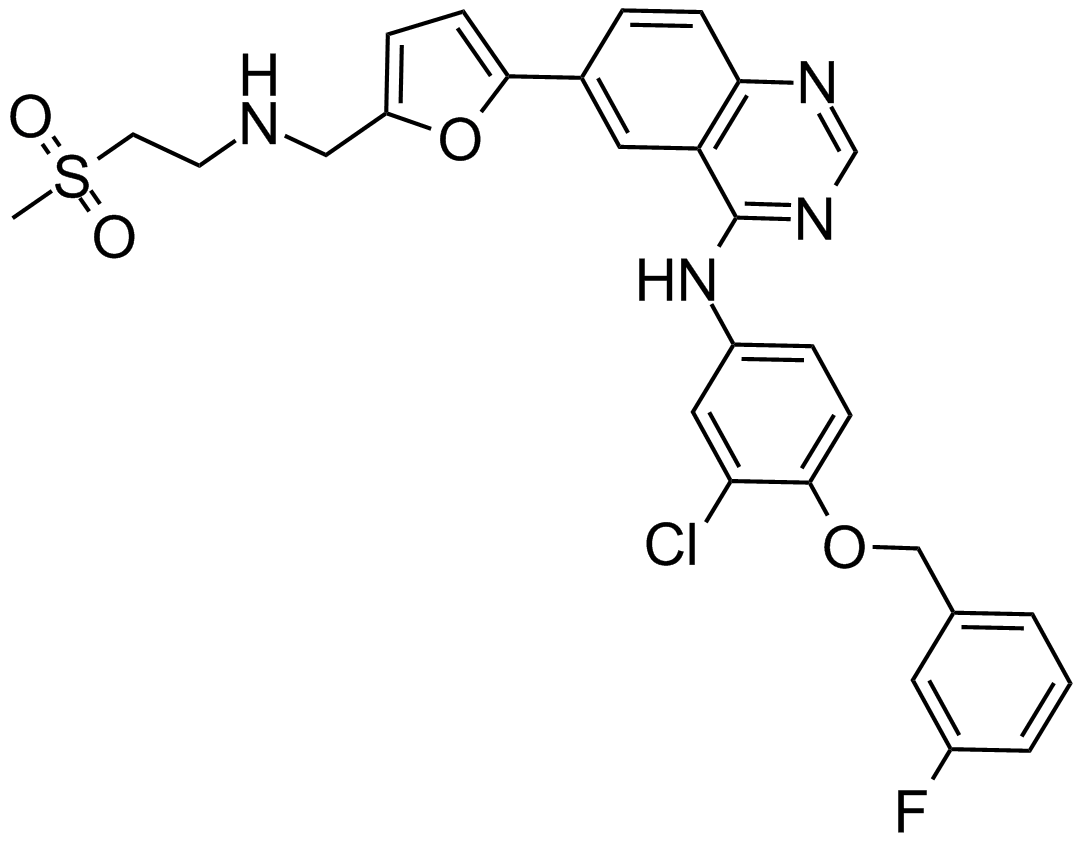
-
GC25559
Lapatinib (GW-572016) Ditosylate
Lapatinib (GW-572016) Ditosylate is a potent EGFR and ErbB2 inhibitor with IC50 of 10.8 and 9.2 nM in cell-free assays, respectively.
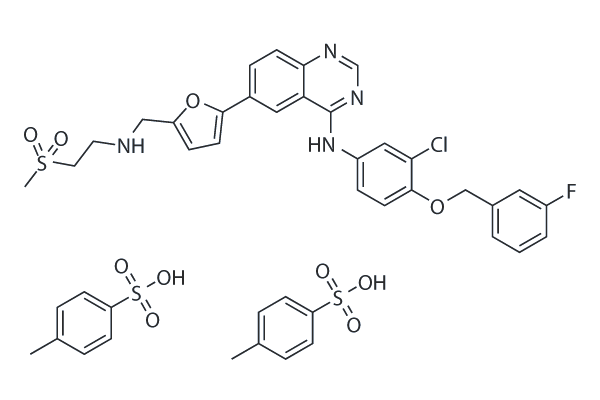
-
GC16593
Lapatinib Ditosylate
Lapatinib Ditosylate is a selective dual inhibitor of ErbB-2 and EGFR with IC50 value against ErbB-2 and EGFR of 9.2 and 10.8 nM in vitro, respectively.
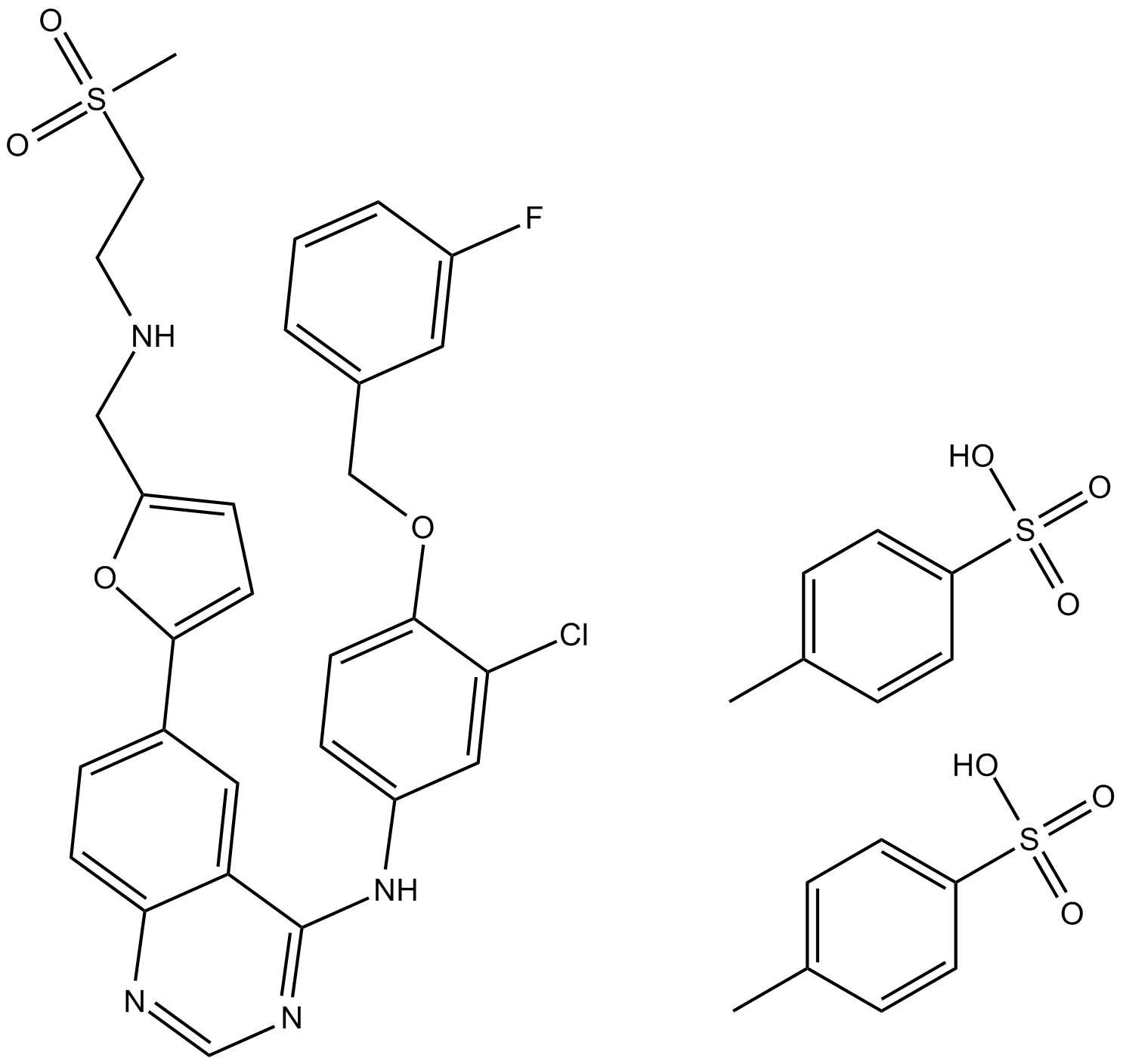
-
GC67759
Lapatinib-d4
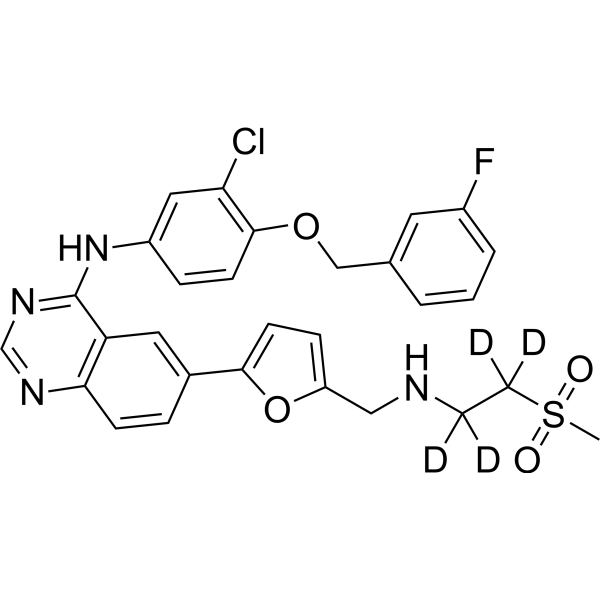
-
GC16021
Lavendustin A
EGFR tyrosine kinase inhibitor
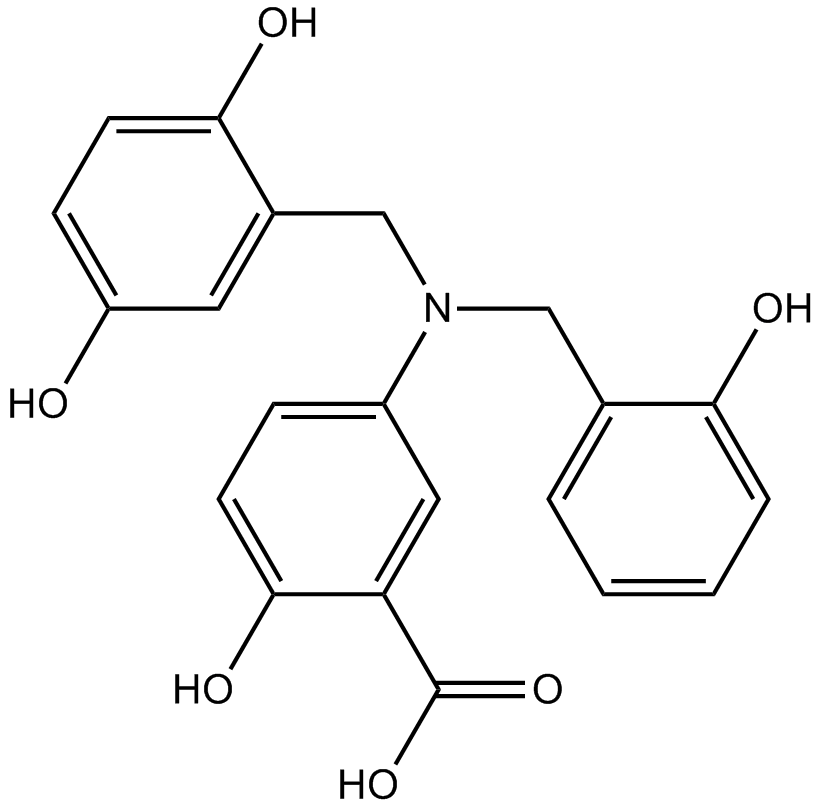
-
GC19218
Lazertinib
Lazertinib is a potent, highly mutant-selective, blood-brain barrier permeable, orally available and irreversible third-generation EGFR tyrosine kinase inhibitor, and can be used in the research of non-small cell lung cancer.
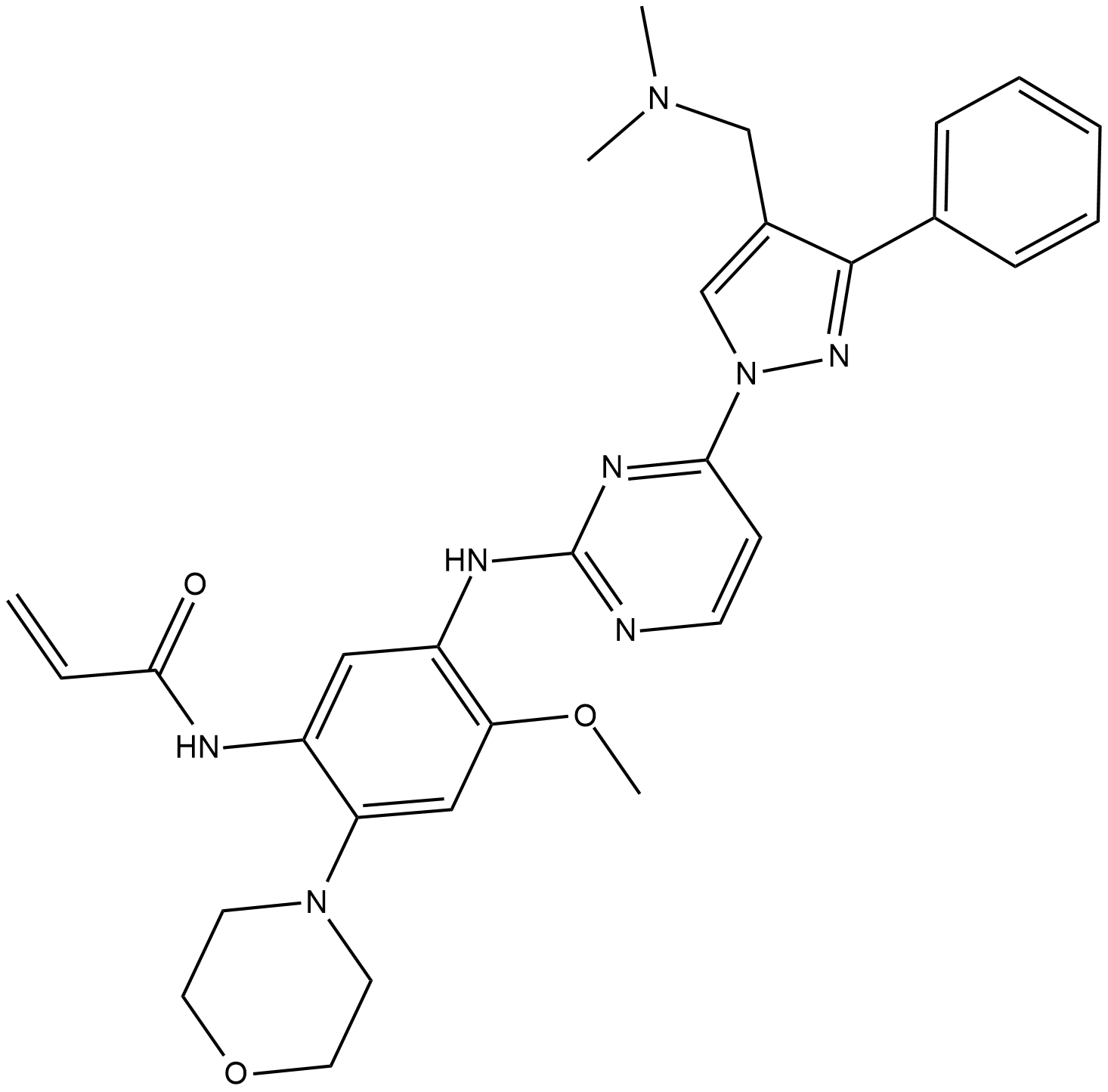
-
GC69410
Lumretuzumab
Lumretuzumab (Anti-Human ERBB3 Recombinant Antibody) is a humanized monoclonal antibody that targets HER3 (ERBB3) and can be used for cancer research.
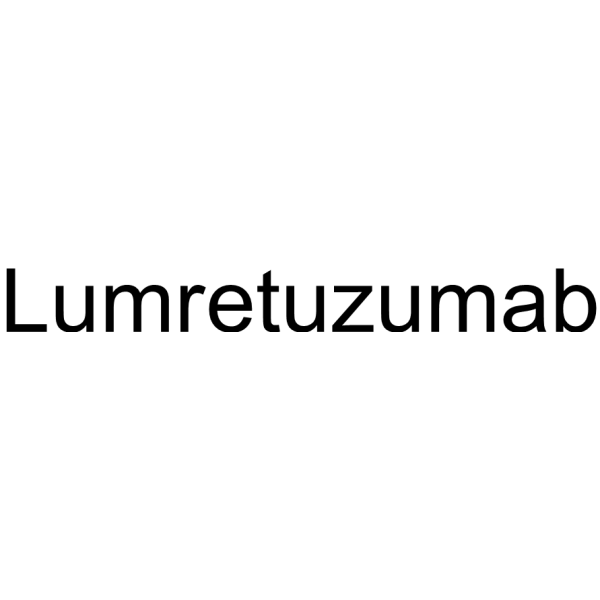
-
GC68304
Margetuximab

-
GC64710
MC-Val-Cit-PAB-Amide-TLR7 agonist 4
MC-Val-Cit-PAB-Amide-TLR7 agonist 4 (example 15) is a HER2-TLR7 and HER2-TLR8 immune agonist conjugate.
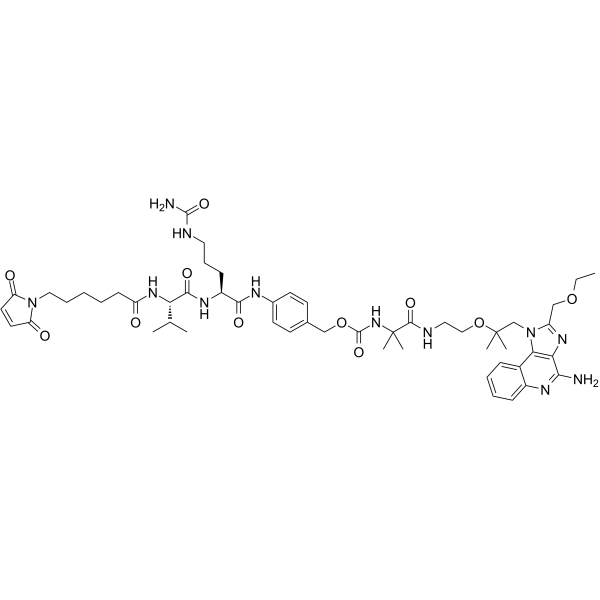
-
GC12069
Methyl 2,5-dihydroxycinnamate
EGF receptor-associated tyrosine kinases inhibitor
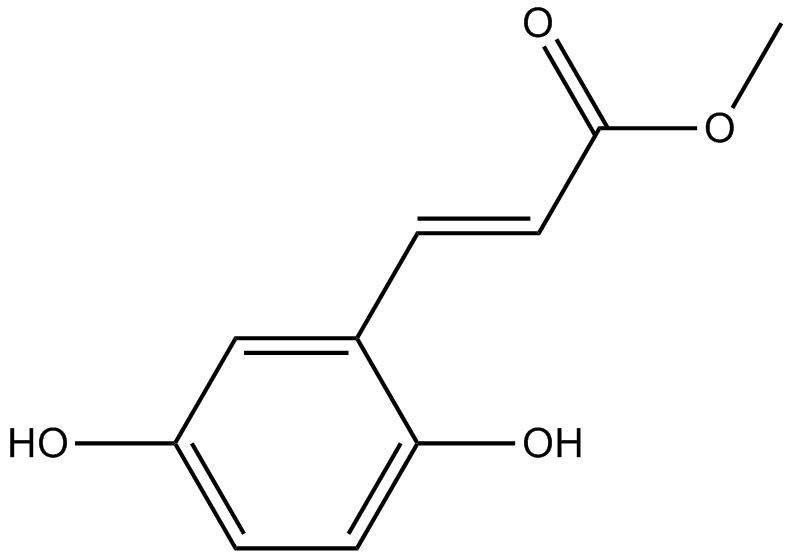
-
GC62160
Mobocertinib succinate
Mobocertinib (TAK-788) succinate is an orally active and irreversible EGFR/HER2 inhibitor. Mobocertinib succinate potently inhibits oncogenic variants containing activating EGFRex20ins mutations with selectivity over wild-type EGFR. Mobocertinib succinate can be used in NSCLC research.
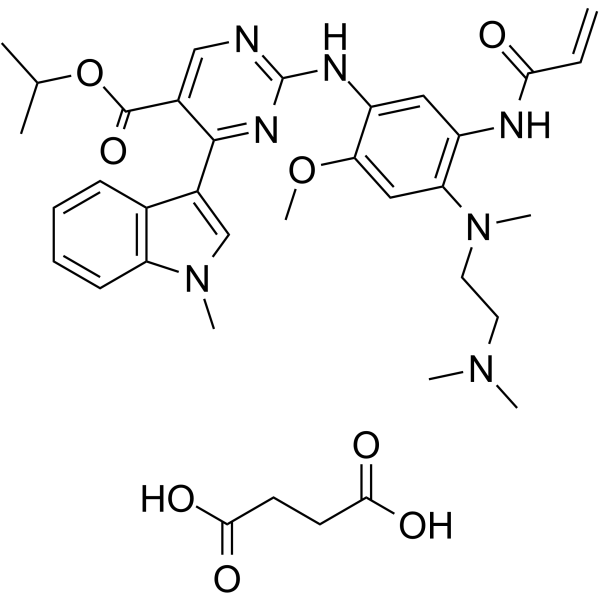
-
GC19256
MTX-211
MTX-211 is a dual inhibitor of EGFR and PI3K, used for the treatment of cancer and other diseases.
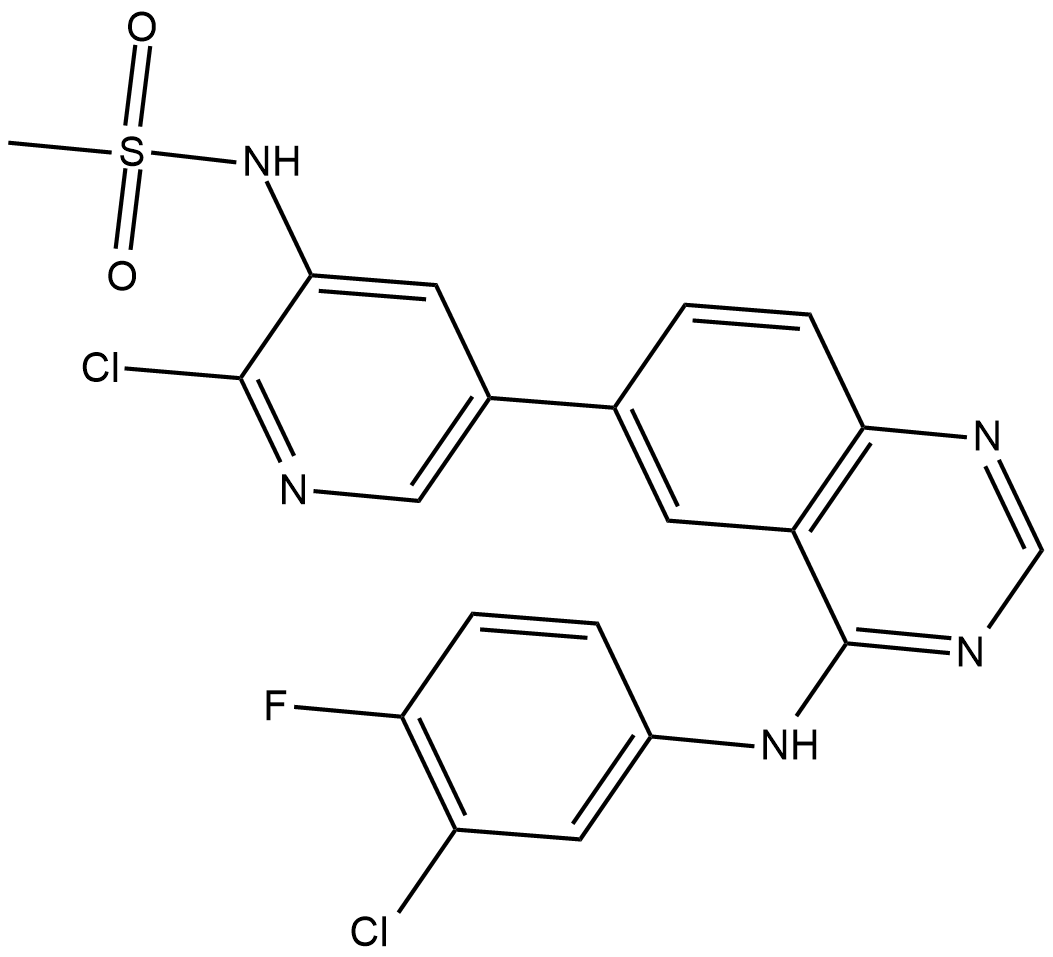
-
GC10250
Mubritinib (TAK 165)
Mubritinib (TAK 165) (TAK-165) is a potent and selective EGFR2/HER2 inhibitor with an IC50 of 6 nM.
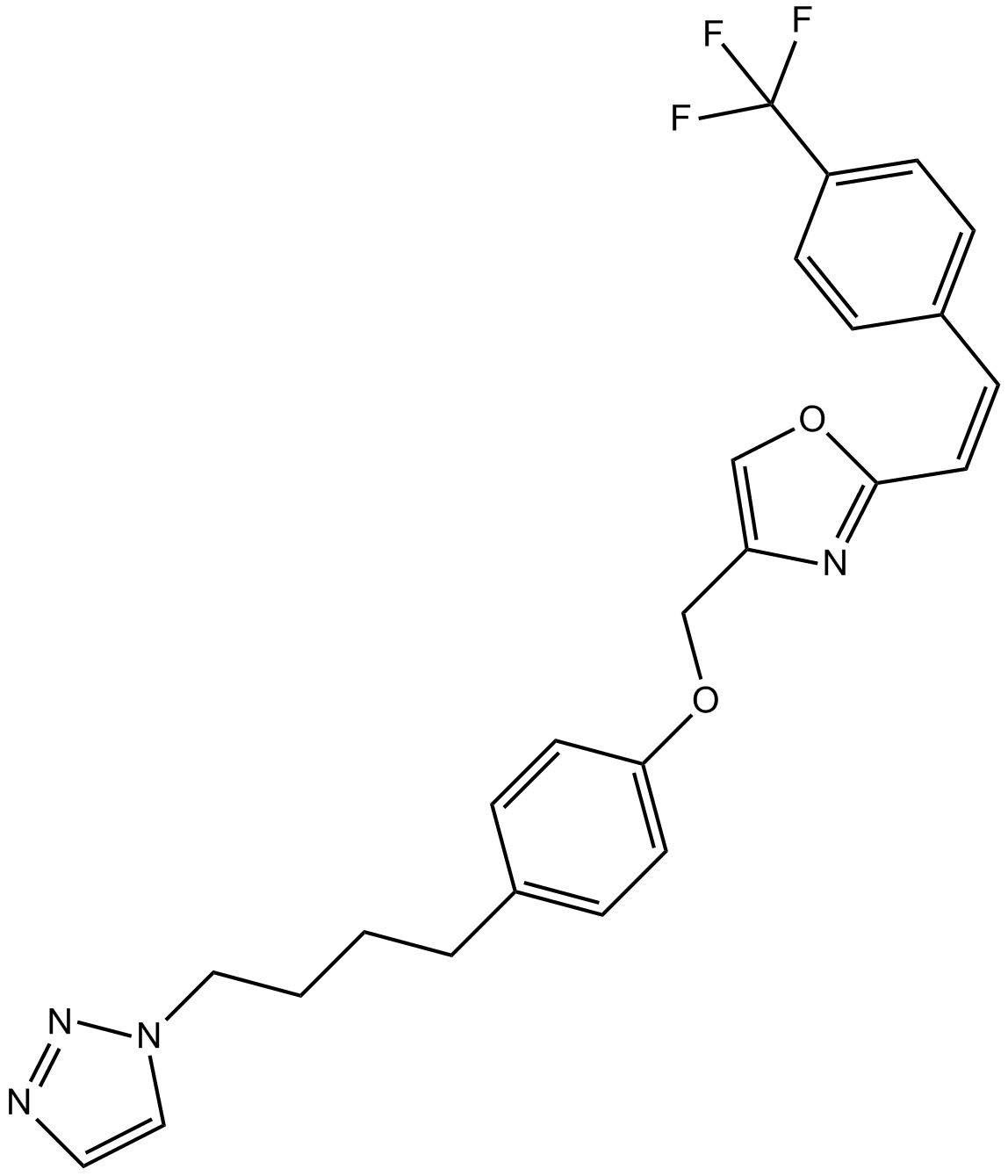
-
GC11126
Mutant EGFR inhibitor
Selective Mutated EGFR inhibitor
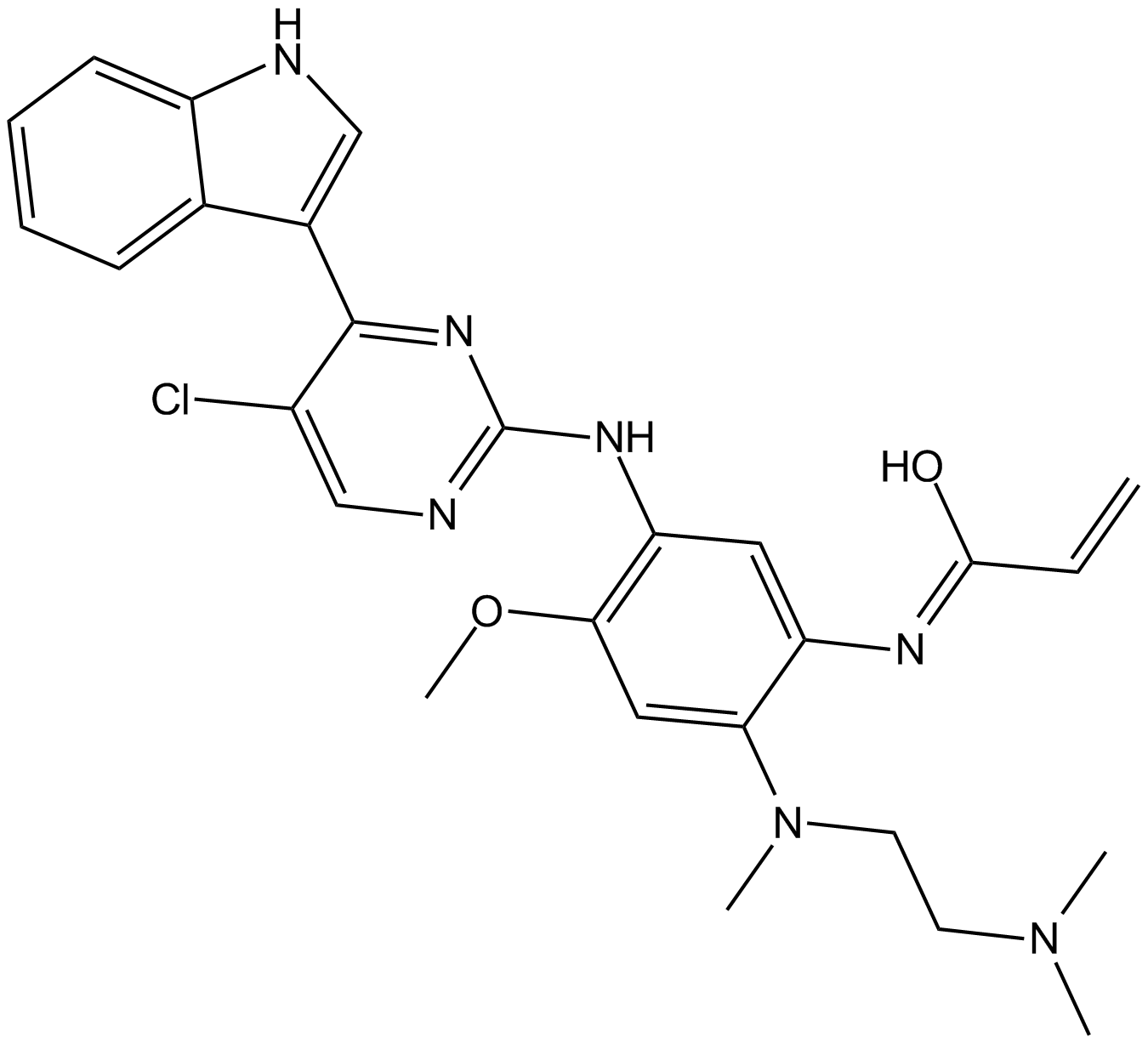
-
GC36666
Mutated EGFR-IN-1
Mutated EGFR-IN-1 (Osimertinib analog) is a useful intermediate for the inhibitors design for mutated EGFR, such as L858R EGFR, Exonl9 deletion activating mutant and T790M resistance mutant.
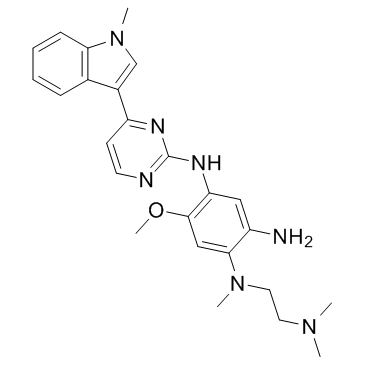
-
GC36667
Mutated EGFR-IN-2
Mutated EGFR-IN-2 (compound 91) is a mutant-selective EGFR inhibitor extracted from patent WO2017036263A1, which potently inhibits single-mutant EGFR (T790M) and double-mutant EGFR (including L858R/T790M (IC50=<1nM) and ex19del/T790M), and can suppress activity of single gain-of-function mutant EGFR (including L858R and ex19del) as well. Mutated EGFR-IN-2 shows anti-tumor antivity.
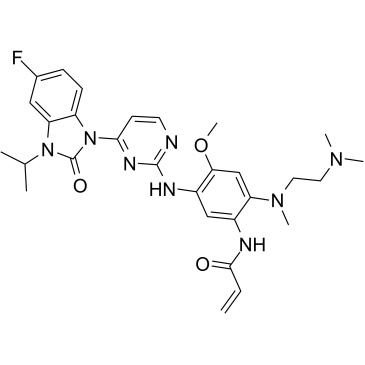
-
GC44263
Myrtillin
Myrtillin (Delphinidin 3-O-glucoside chloride) is an active anthocyanin found in bilberry extract. Myrtillin induces a pro-apoptotic effect in B cell chronic lymphocytic leukaemia (B CLL). Myrtillin exerts phytoestrogen activity by binding to ERβ, with an IC50 of 9.7 μM. Delphinidin-3-O-glucoside chloride inhibits EGFR with an IC50 of 2.37 μM.

-
GC33022
Naquotinib (ASP8273)
Naquotinib (ASP8273) (ASP8273) is an orally available, mutant-selective and irreversible EGFR inhibitor; with IC50s of 8-33 nM toward EGFR mutants and 230 nM for EGFR.
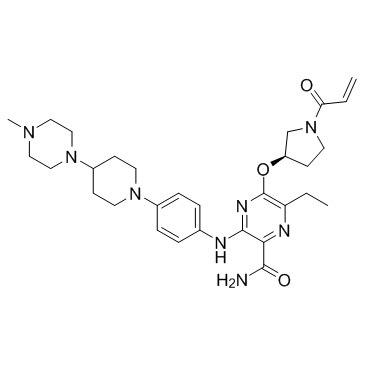
-
GC32836
Naquotinib mesylate (ASP8273)
Naquotinib mesylate (ASP8273) (ASP8273 mesylate) is an orally available, mutant-selective and irreversible EGFR inhibitor; with IC50s of 8-33 nM toward EGFR mutants and 230 nM for EGFR.
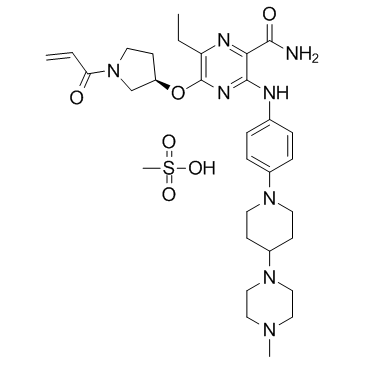
-
GC36699
Nazartinib mesylate
Nazartinib mesylate (EGF816 mesylate) is a novel, covalent mutant-selective EGFR inhibitor, with Ki and Kinact of 31 nM and 0.222 min?1 on EGFR(L858R/790M) mutant, respectively.
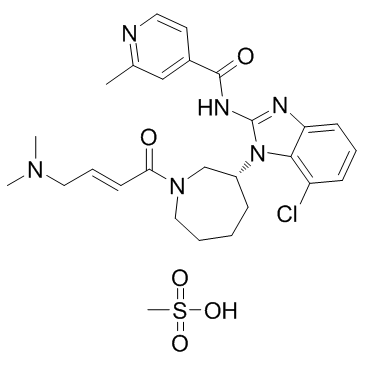
-
GC10362
Neratinib (HKI-272)
Neratinib (HKI-272) (HKI-272) is an orally available, irreversible, highly selective HER2 and EGFR inhibitor with IC50s of 59 nM and 92 nM, respectively.
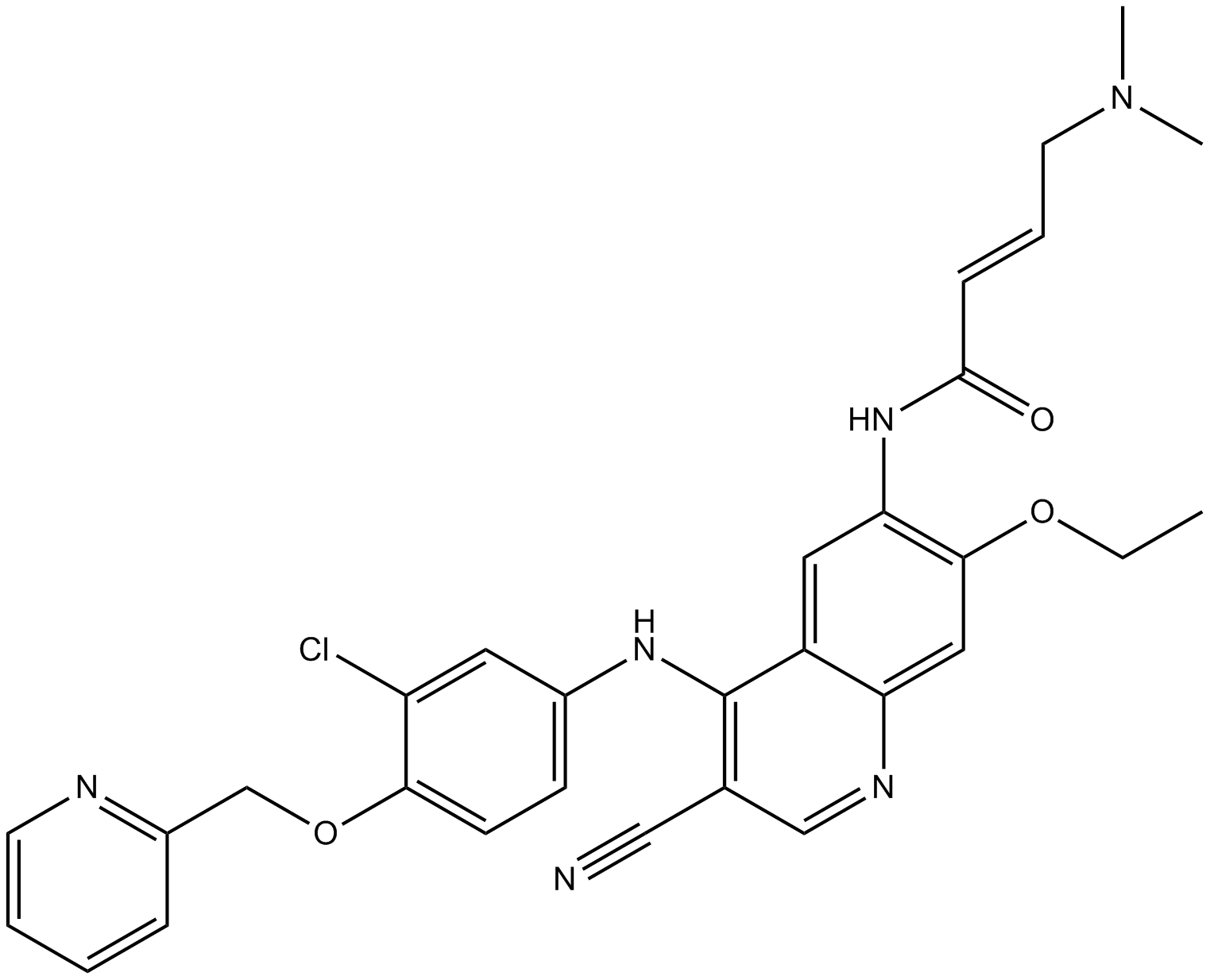
-
GC62601
Nimotuzumab
Nimotuzumab is a humanized IgG1 monoclonal antibody targeting EGFR with a KD of 0.21 nM. Nimotuzumab is directed against the extracellular domain of the EGFR blocking the binding to its ligands. Nimotuzumab, a strong antitumor drug, is cytolytic on target tumors by its capacity to cause antibody dependent cell mediated cytotoxicity (ADCC) and complement dependent cytotoxicity (CDC).
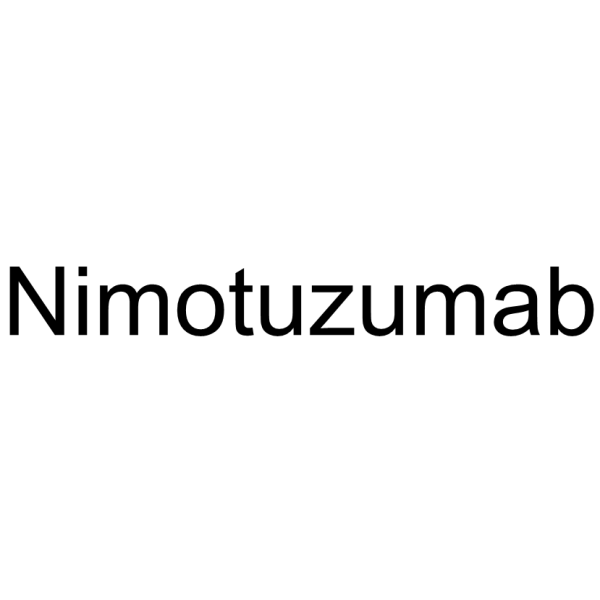
-
GC33131
NRC-2694
NRC-2694 is an epidermal growth factor receptor (EGFR) antagonist with anti-cancer and anti-proliferative properties.
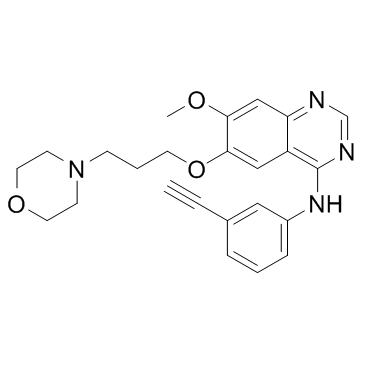
-
GC14103
NSC228155
EGFR activator
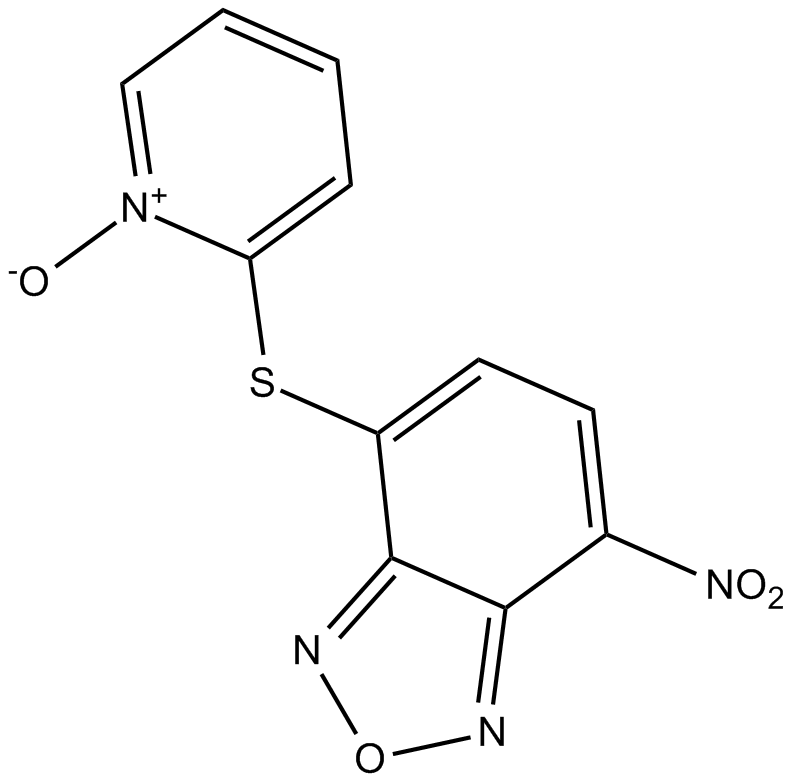
-
GC69596
NSC689857
NSC689857 is an effective inhibitor of EGFR and SCFSKP2, with an IC50 of 36 μM against Skp2-Cks1. NSC689857 can inhibit phosphorylation of p27 (IC50=30 μM). NSC689857 exhibits varying activity in different types of cancer, with higher resistance activity against leukemia cell lines compared to other cancer cells.
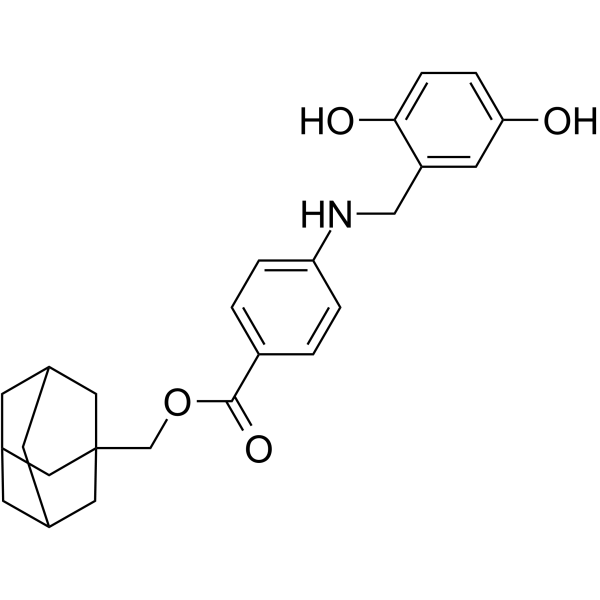
-
GC44491
O-Desmethyl Gefitinib
O-Desmethyl gefitinib is the major metabolite of gefitinib in human plasma, formed by the cytochrome P450 isoform CYP2D6.

-
GC68321
O-Desmethyl gefitinib-d8
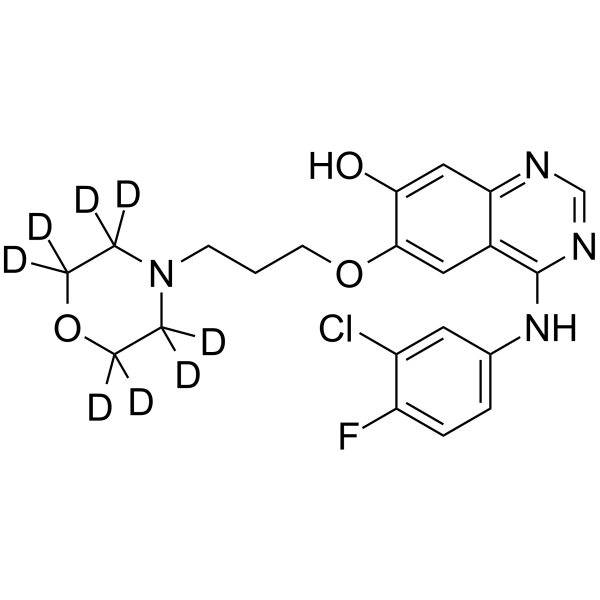
-
GC15370
Olmutinib (HM61713, BI 1482694)
Olmutinib (HM61713, BI 1482694) (HM61713; BI-1482694) is an orally active and irreversible third EGFR tyrosine kinase inhibitor that binds to a cysteine residue near the kinase domain. Olmutinib (HM61713, BI 1482694) is used for NSCLC.
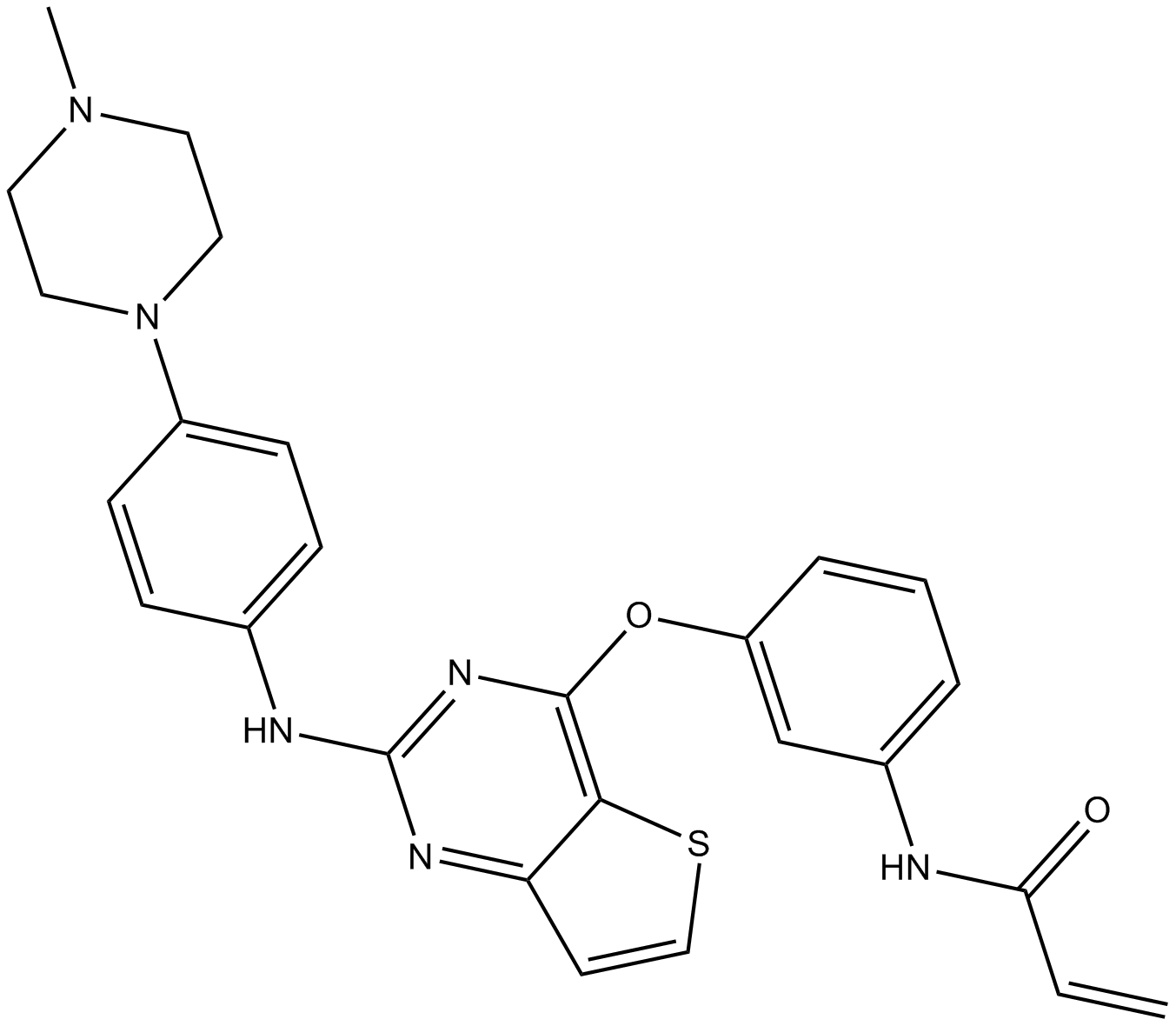
-
GC64770
Oritinib
Oritinib (SH-1028), an irreversible third-generation EGFR TKI, overcomes T790M-mediated resistance in non-small cell lung cancer. Oritinib (SH-1028), a mutant-selective inhibitor of EGFR kinase activity, inhibits EGFRWT, EGFRL858R, EGFRL861Q, EGFRL858R/T790M, EGFRd746-750 and EGFRd746-750/T790M kinases, with IC50s of 18, 0.7, 4, 0.1, 1.4 and 0.89 nM, respectively.
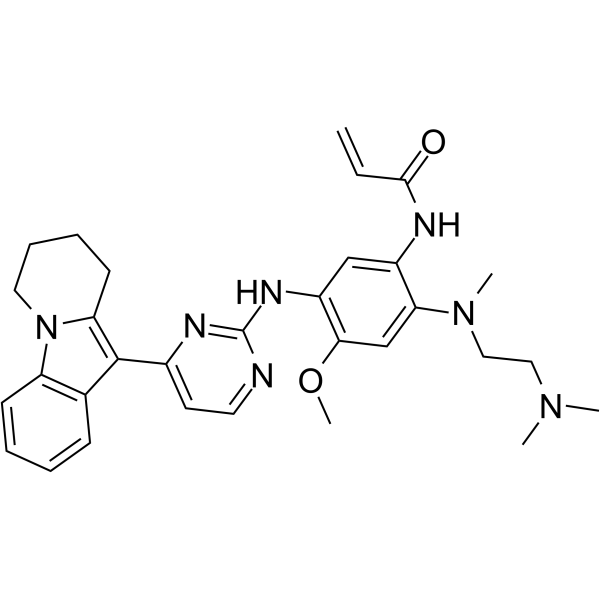
-
GC17530
OSI-420
OSI-420 (OSI-420) is an active metabolite of Erlotinib. Erlotinib is a potent EGFR tyrosin kinase inhibitor.
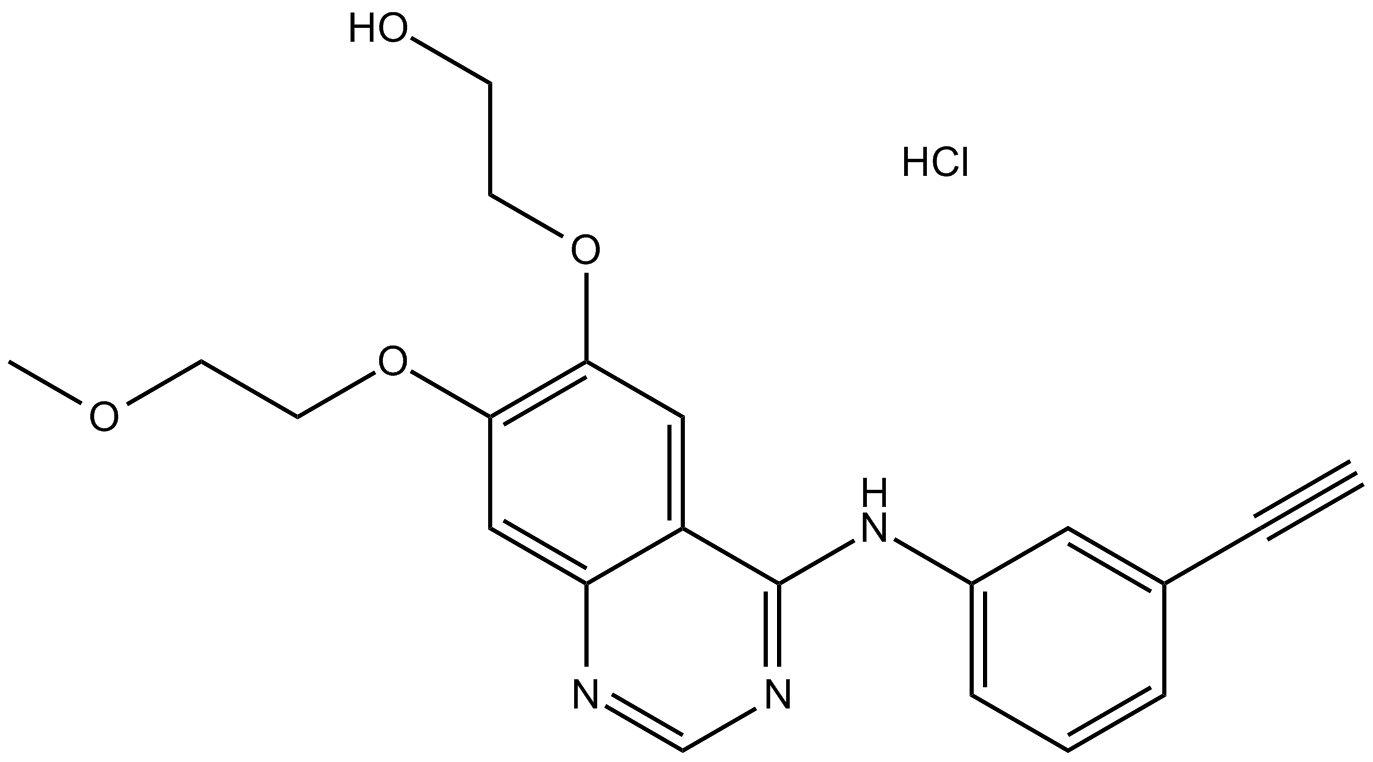
-
GC61161
Osimertinib D6
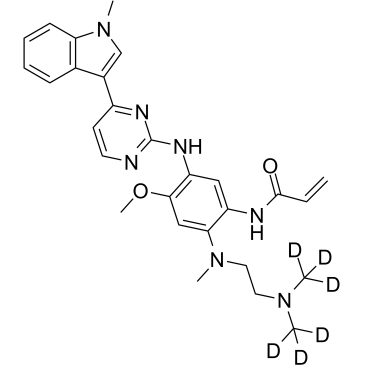
-
GC36819
Osimertinib dimesylate
Osimertinib dimesylate (AZD-9291 dimesylate) is an irreversible and mutant selective EGFR inhibitor with IC50s of 12 and 1 nM against EGFRL858R and EGFRL858R/T790M, respectively.
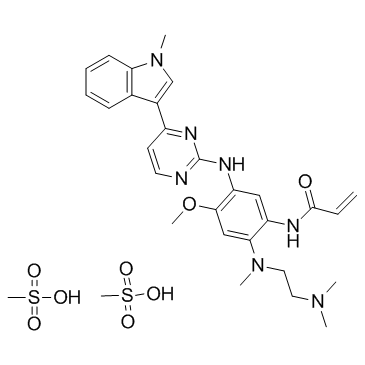
-
GC66405
Panitumumab
Panitumumab (ABX-EGF) is a fully human IgG2 anti-EGFR monoclonal antibody with anti-tumor activity. Panitumumab inhibits tumor cell proliferation, survival and angiogenesis. Panitumumab can be used in the research of cancers, such as colon cancer.
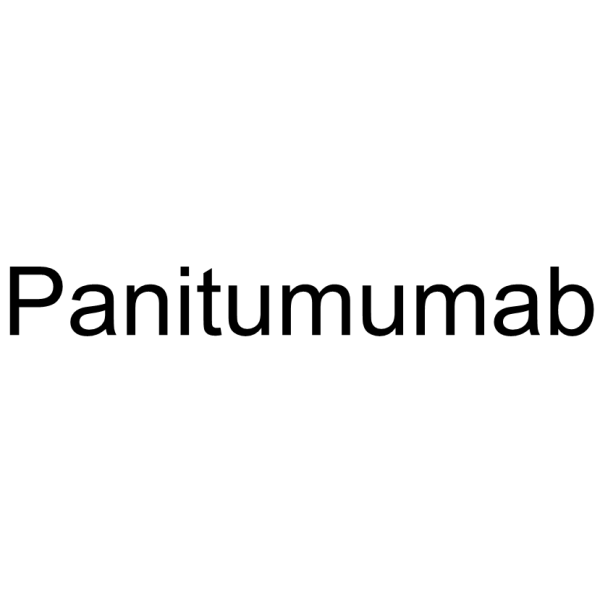
-
GC66333
Panitumumab (anti-EGFR)
Panitumumab (anti-EGFR) is a fully human IgG2 anti-EGFR monoclonal antibody with anti-tumor activity. Panitumumab (anti-EGFR) inhibits tumor cell proliferation, survival and angiogenesis. Panitumumab (anti-EGFR) can be used in the research of cancers, such as colon cancer.
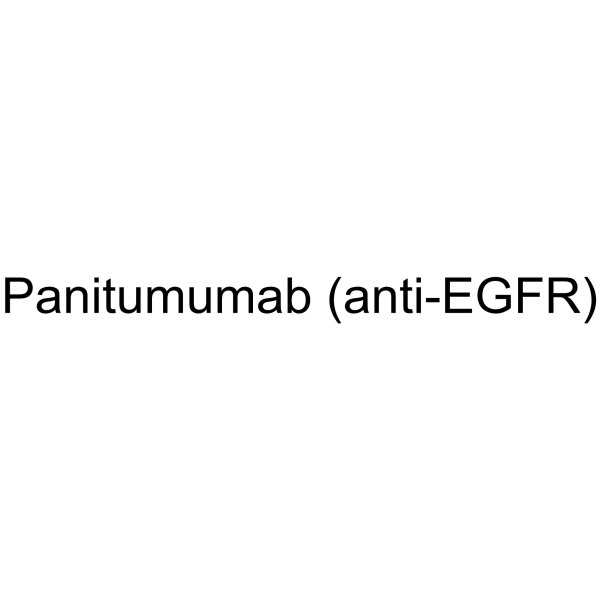
-
GC69665
Patritumab
Patritumab (Human Anti-ERBB3 Recombinant Antibody) is a neutralizing monoclonal antibody targeting ERBB3. Patritumab has synergistic effects with Cetuximab and can effectively inhibit the phosphorylation of EGFR, HER2, HER3, ERK and AKT. Patritumab also induces apoptosis and inhibits the growth of pancreatic, non-small cell lung cancer and colorectal cancer xenograft tumors.
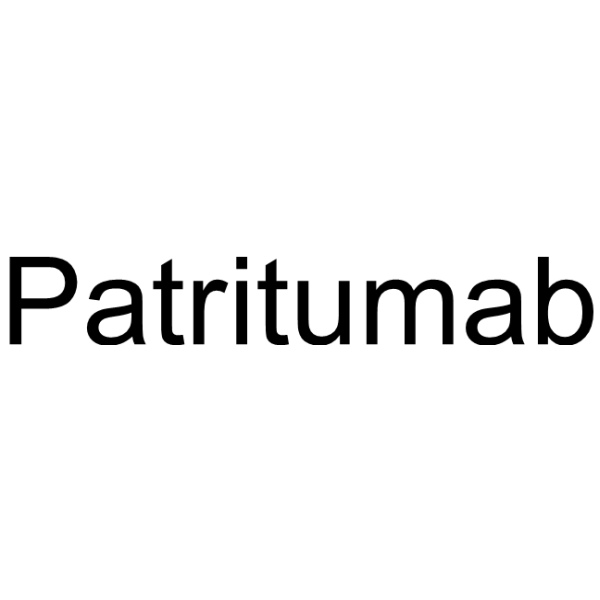
-
GC44583
PD 089828
PD 089828 is a competitive inhibitor of the receptor tyrosine kinases FGFR1, PDGFRβ, and EGFR (IC50s = 0.15, 1.76, and 5.47 μM, respectively) and a noncompetitive inhibitor of the nonreceptor tyrosine kinase c-Src (IC50 = 0.18 μM).

-
GC49617
PD 153035
A potent EGFR kinase inhibitor

-
GC15983
PD 153035 hydrochloride
A highly potent EGFR inhibitor
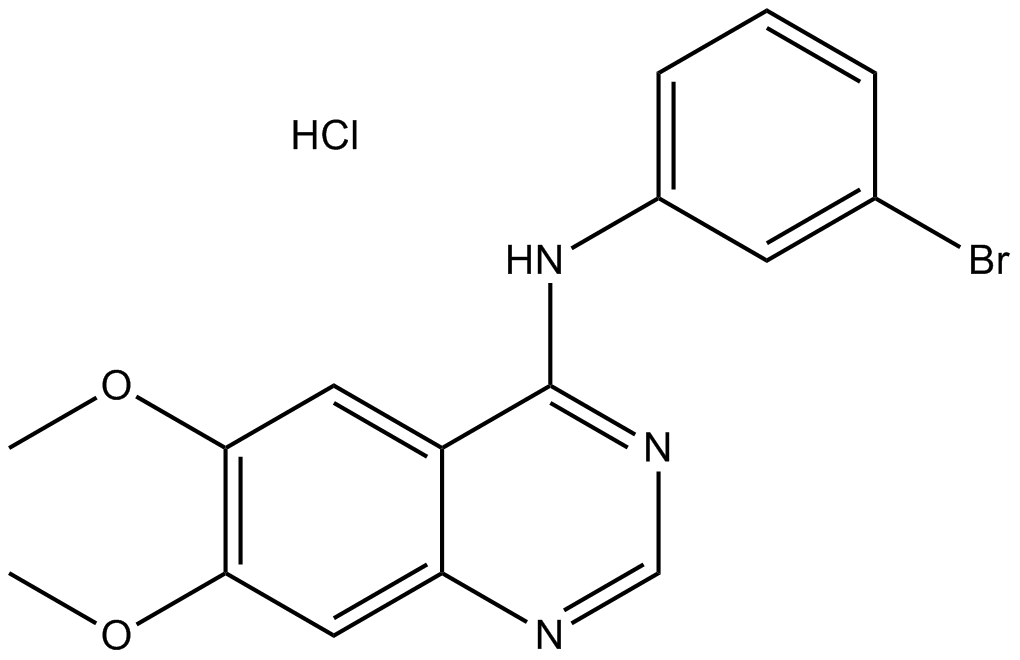
-
GC15925
PD 158780
ErbB receptor family tyrosine kinase inhibitor
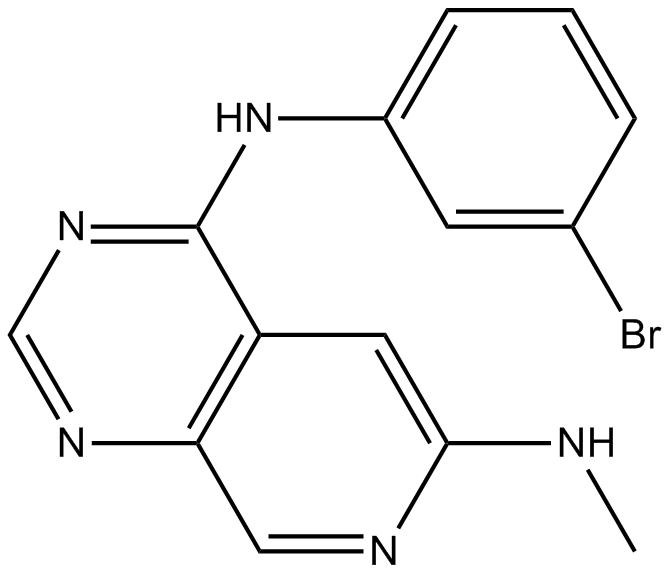
-
GC34105
PD153035 Hydrochloride (ZM 252868)
A highly potent EGFR inhibitor
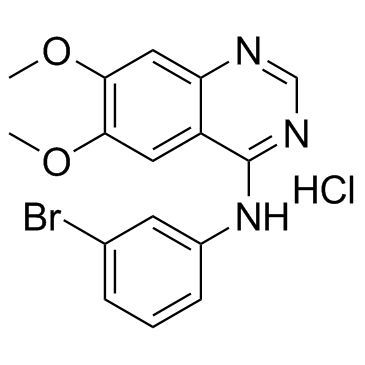
-
GC11015
PD168393
EGFR inhibitor
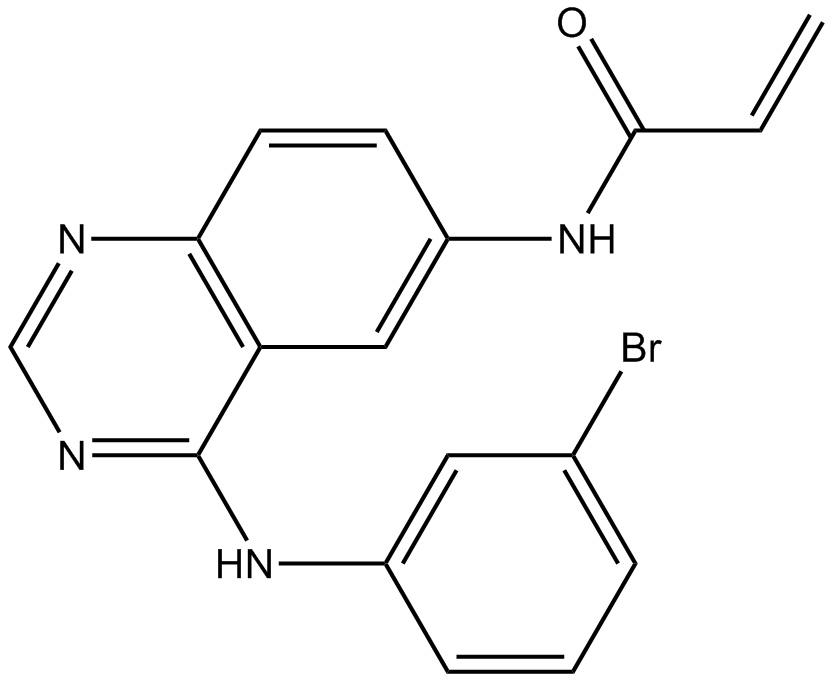
-
GC17473
Pelitinib (EKB-569)
Pelitinib (EKB-569) (EKB-569;WAY-EKB 569) is an irreversible inhibitor of EGFR with an IC50 of 38.5 nM; also slightly inhibits Src, MEK/ERK and ErbB2 with IC50s of 282, 800, and 1255 nM, respectively.
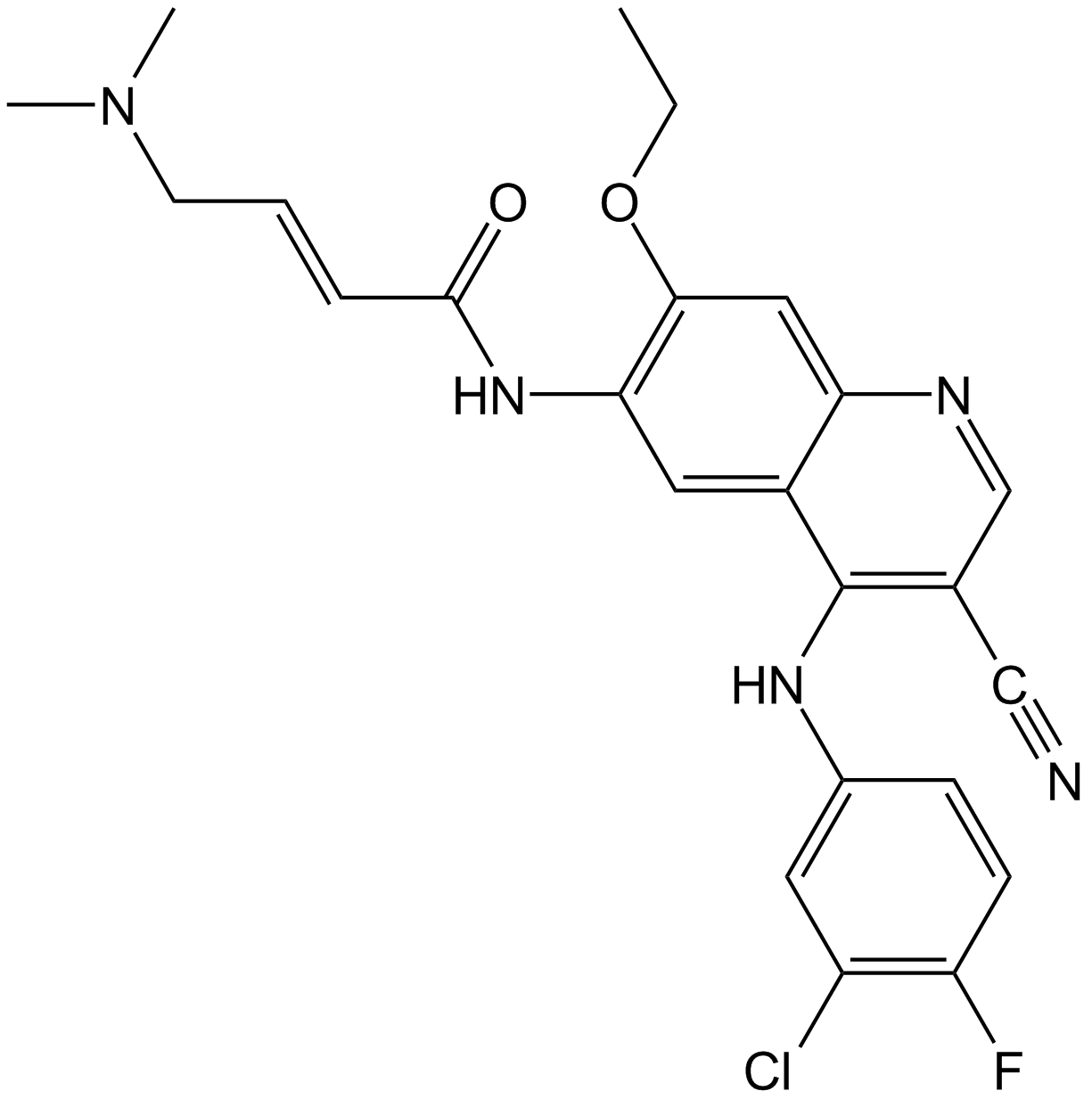
-
GC34210
Pertuzumab (Anti-Human HER2, Humanized Antibody)
Pertuzumab (Anti-Human HER2, Humanized Antibody), the first of a new class of agents designated as HER dimerisation inhibitors, is a humanised IgG1 monoclonal antibody (mAb) that sterically binds domain II of the erbB2 receptor .
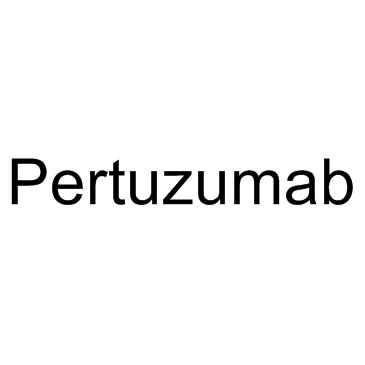
-
GC69690
Petosemtamab
Petosemtamab (MCLA 158) is a monoclonal antibody (mAb) that targets both EGFR (Kd: 0.22 nM) and LGR5 (Kd: 0.86 nM). Petosemtamab blocks EGFR signaling and receptor degradation in LGR5+ cancer cells. It can be used for research on solid tumors such as head and neck squamous cell carcinoma (HNSCC), metastatic colorectal cancer (CRC), etc.
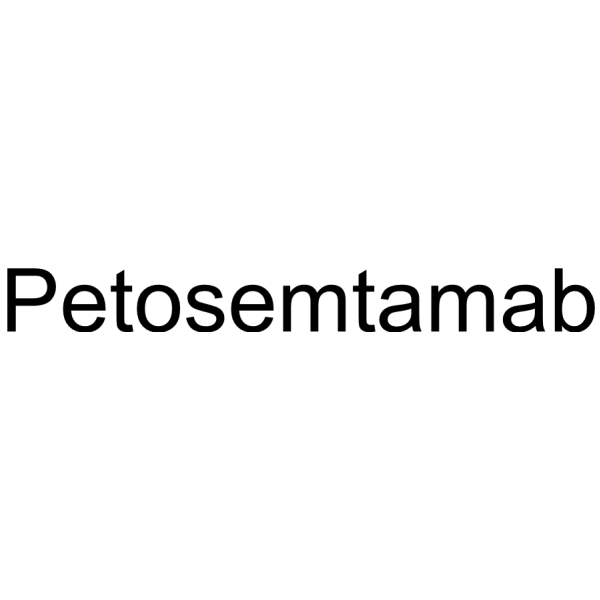
-
GC32927
PF-06459988
PF-06459988 is an orally activity, irreversible and mutant-selective inhibitor of EGFR mutant forms. PF-06459988 demonstrates high potency and specificity to the T790M-containing double mutant EGFRs. PF-06459988 can be used for the research of cancer.
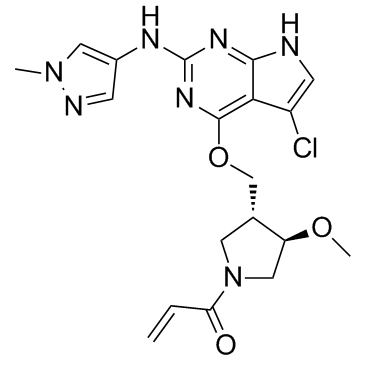
-
GC50083
PKI 166 hydrochloride
Potent EGFR-kinase inhibitor
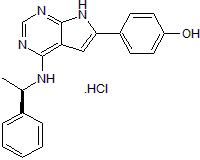
-
GC40915
PKI-166
An inhibitor of EGFR

-
GC69728
Ponezumab
Ponezumab (PF-04360365) is a humanized monoclonal antibody against amyloid beta protein of the IgG2 class. Ponezumab can reduce Aβ levels in the central nervous system and improve performance in various learning and memory models in mice. Ponezumab can be used for research on Alzheimer's disease.
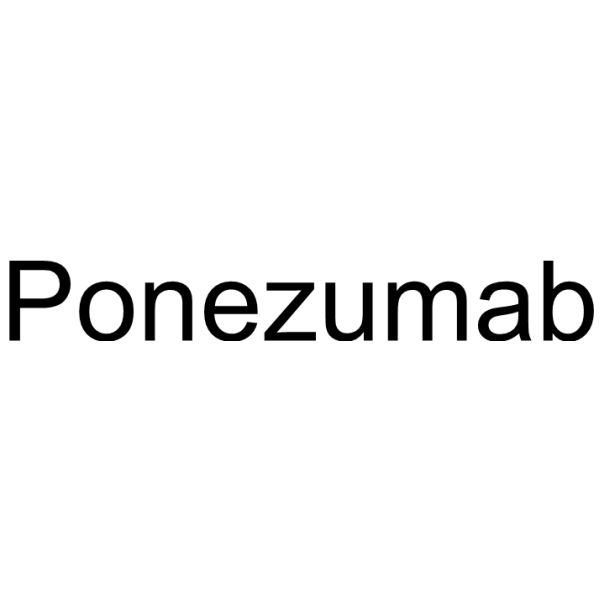
-
GC17916
Poziotinib
A irreversible pan-HER inhibitor
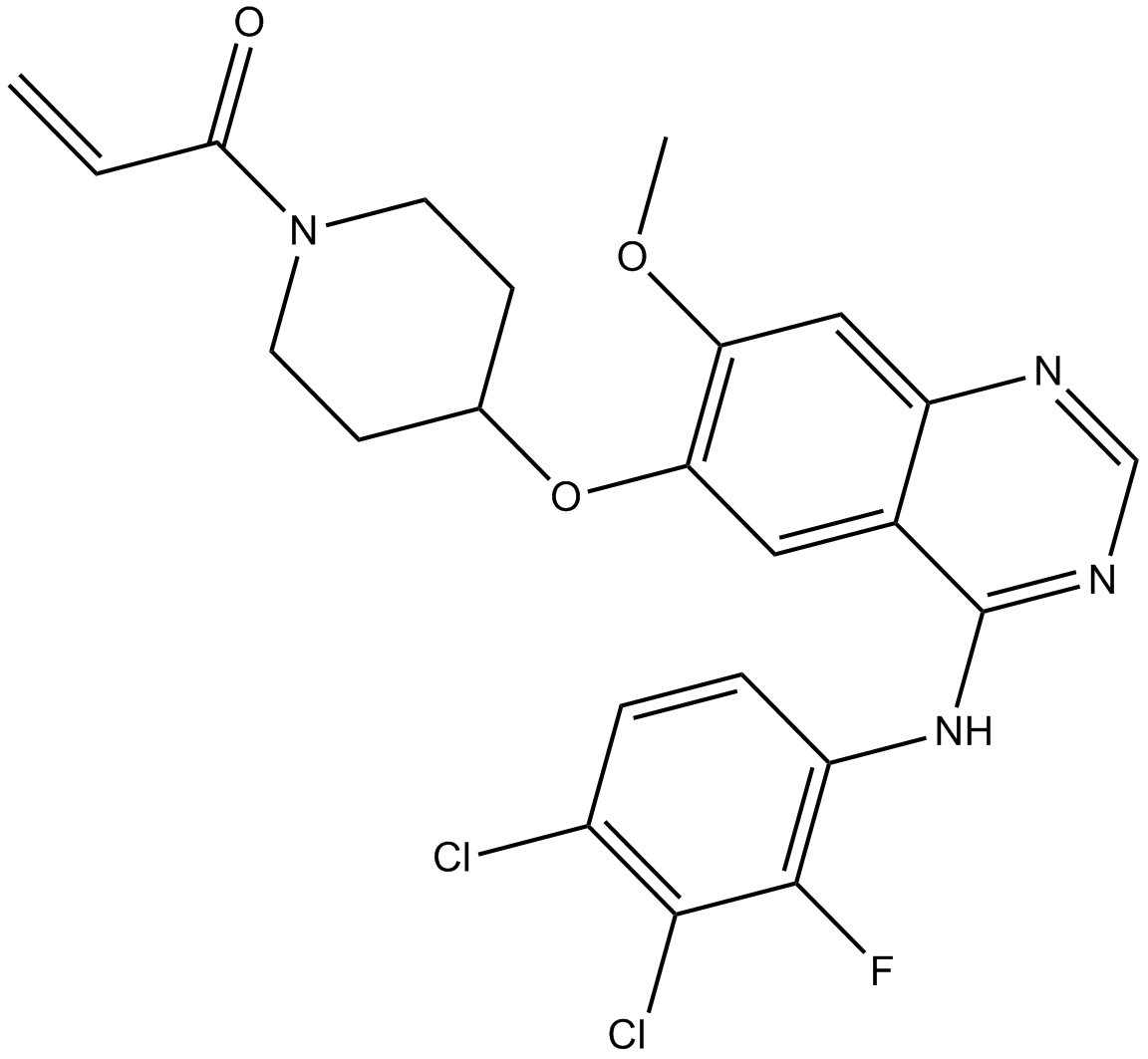
-
GC32733
Pyrotinib (SHR-1258)
Pyrotinib (SHR-1258) (SHR-1258) is a potent and selective EGFR/HER2 dual inhibitor with IC50s of 13 and 38 nM, respectively.
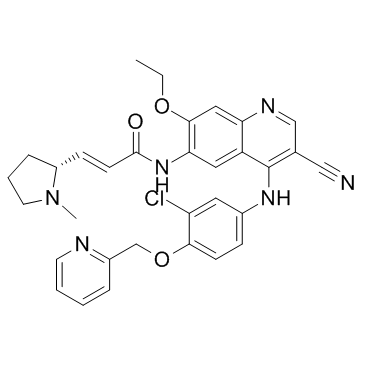
-
GC32989
Pyrotinib dimaleate (SHR-1258 dimaleate)
Pyrotinib dimaleate (SHR-1258 dimaleate) (SHR-1258 dimaleate) is a potent and selective EGFR/HER2 dual inhibitor with IC50s of 13 and 38 nM, respectively.
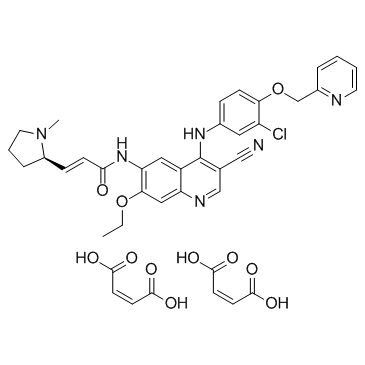
-
GC62341
Rezivertinib
Rezivertinib (BPI-7711) is an orally active, highly selective and irreversible third-generation EGFR tyrosine kinase inhibitor (TKI). Rezivertinib exhibits high potency against the common activation EGFR and the resistance T790M mutations. Rezivertinib has excellent central nervous system (CNS) penetration and has antitumor activity.
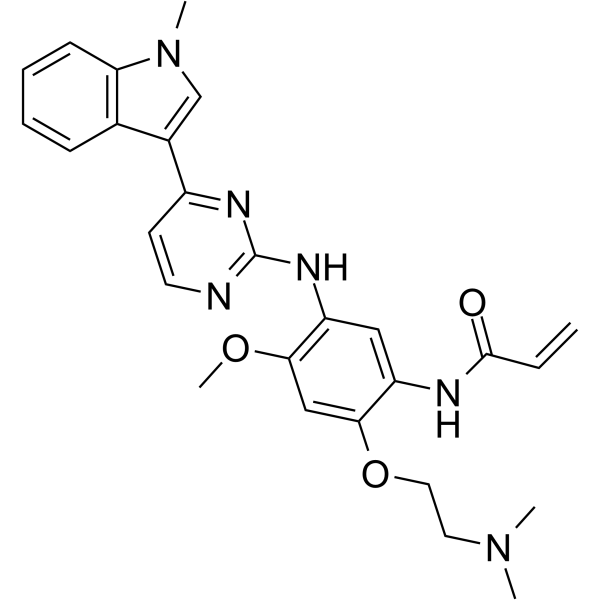
-
GC12038
RG 13022
EGFR tyrosine kinase inhibitor
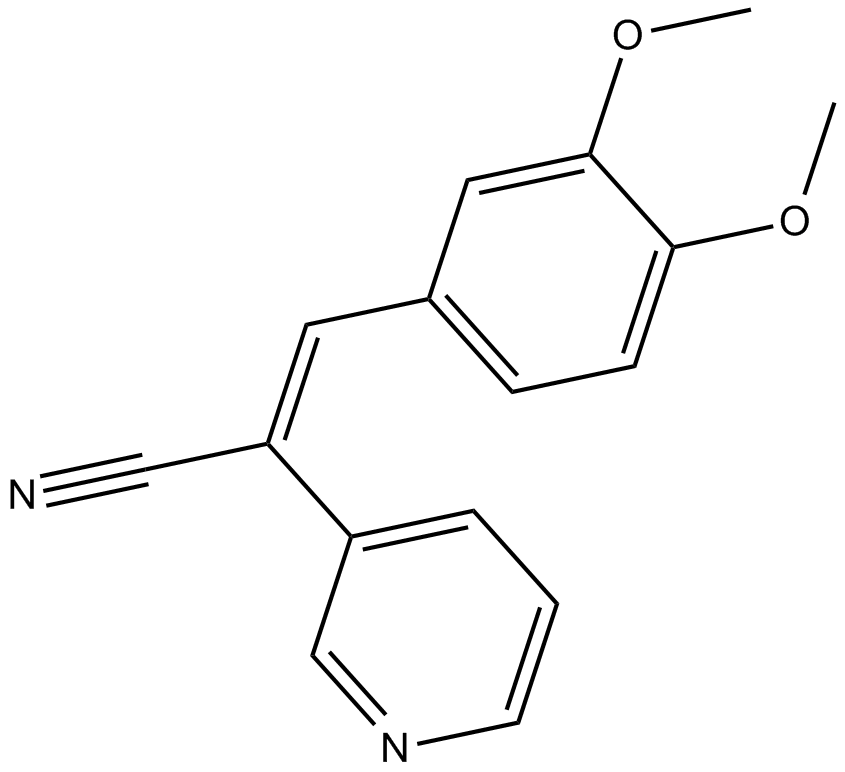
-
GC10217
RG-14620
inhibitor of epidermal growth factor (EGF) receptor kinase
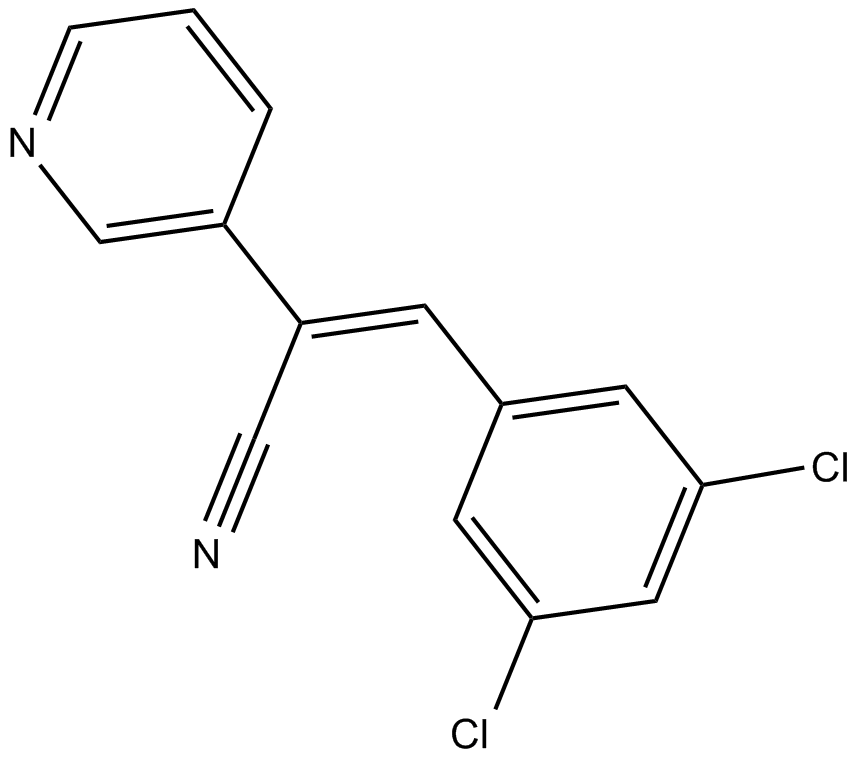
-
GC33061
Rociletinib hydrobromide (CO-1686 (hydrobromide))
Rociletinib hydrobromide (CO-1686 (hydrobromide)) (CO-1686 hydrobromide) is an orally delivered kinase inhibitor that specifically targets the mutant forms of EGFR including T790M, and the Ki values for EGFRL858R/T790M and EGFRWT are 21.5 nM and 303.3 nM, respectively.
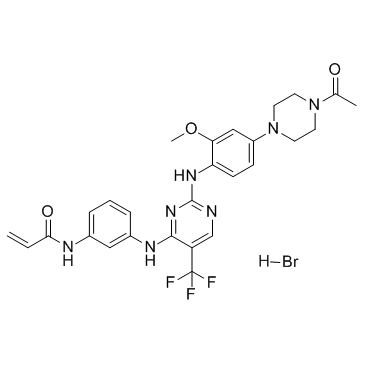
-
GC37568
RTC-5
RTC-5 (TRC-382) is an optimized phenothiazine with anti-cancer potency. RTC-5 demonstrates efficacy against a xenograft model of an EGFR driven cancer, its effects is attributed to concomitant negative regulation of PI3K-AKT and RAS-ERK signaling.

-
GC69843
Ruserontinib
Ruserontinib (SKLB1028) is an orally active inhibitor of EGFR, FLT3, and Abl kinases with an IC50 value of 55 nM against human FLT3. It has anti-tumor activity.
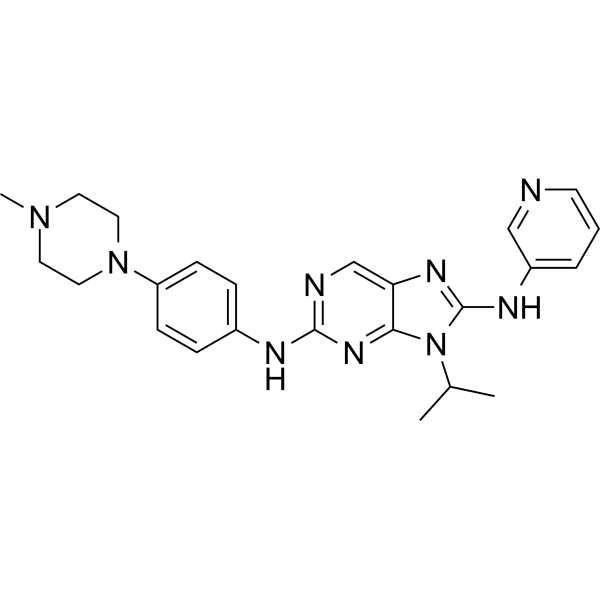
-
GC68430
Selatinib
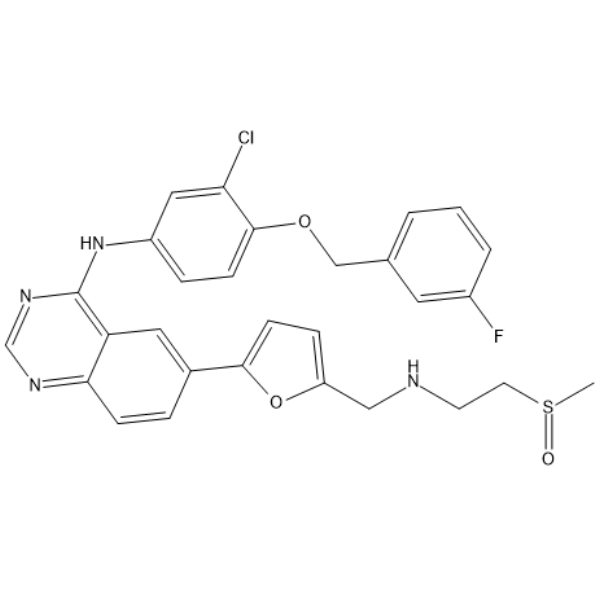
-
GC62385
Simotinib
Simotinib is a selective, specific, and orally bioavailable EGFR tyrosine kinase inhibitor, with an IC50 of 19.9 nM. Antineoplastic activities.
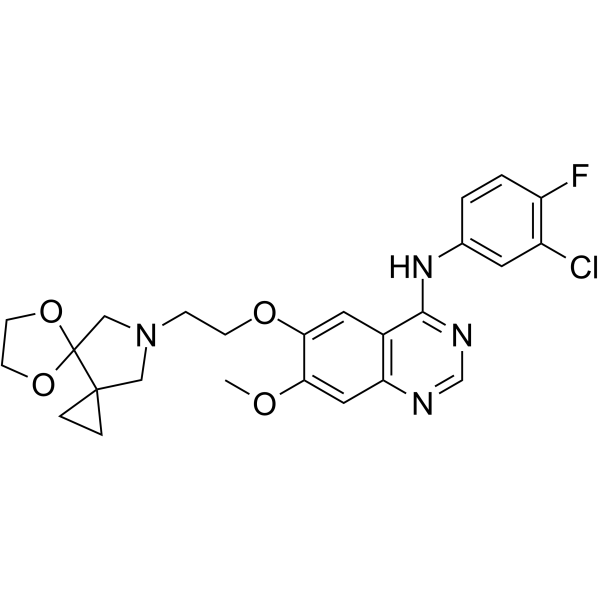
-
GC61780
SU5204
SU5204, a tyrosine kinase inhibitor, has IC50s of 4 and 51.5 μM for FLK-1 (VEGFR-2) and HER2, respectively.
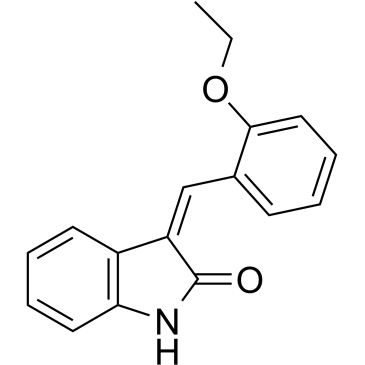
-
GC63521
Sunvozertinib
Sunvozertinib (DZD9008) is a potent ErbBs (EGFR, Her2, especially mutant forms) and BTK inhibitor. Sunvozertinib shows IC50s of 20.4, 20.4, 1.1, 7.5, and 80.4 nM for EGFR exon 20 NPH insertion, EGFR exon 20 ASV insertion, EGFR L858R and T790M mutations, and Her2 Exon20 YVMA, and EGFR WT A431, respectively (patent WO2019149164A1, example 52).
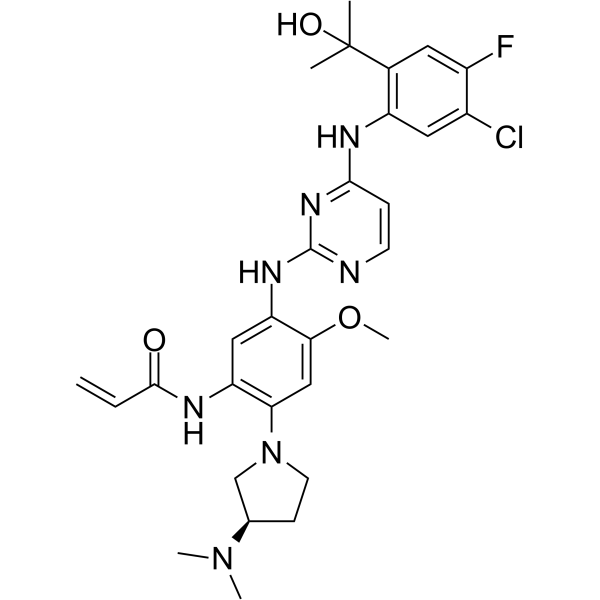
-
GC11172
TAK-285
HER2/EGFR(HER1) inhibitor
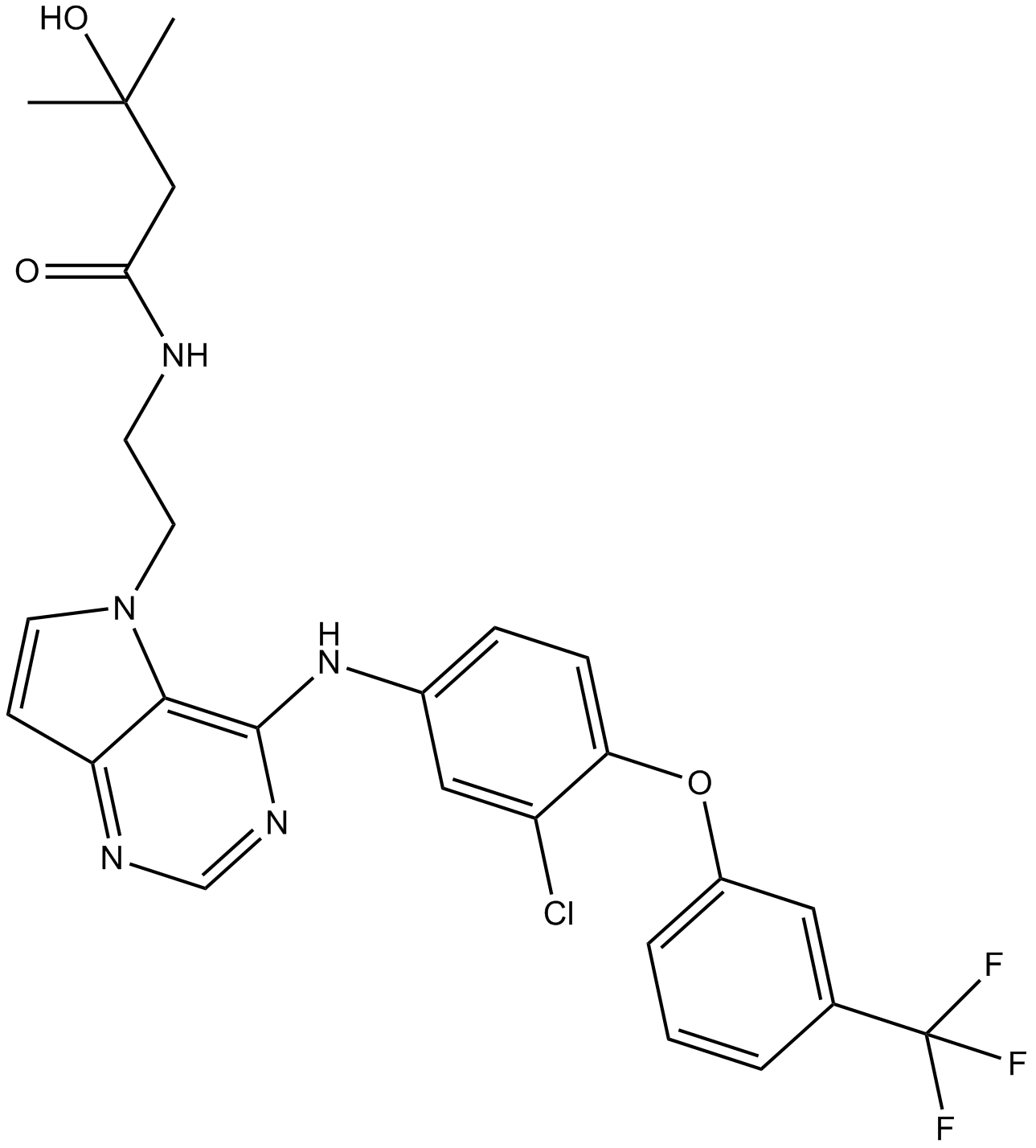
-
GC32100
Tarloxotinib bromide (TH-4000)
Tarloxotinib bromide (TH-4000) (TH-4000) is an irreversible EGFR/HER2 inhibitor.
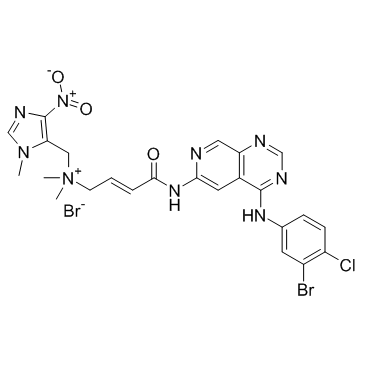
-
GC65310
TAS0728
TAS0728 is a potent, selective, orally active, irreversible and covalent-binding HER2 inhibitor, with an IC50 of 13 nM. TAS0728 also shows IC50s of 4.9, 8.5, 31, 65, 33, 25 and 86 nM for BMX、HER4、BLK、EGFR、JAK3、SLK and LOK respectively. Furthermore, TAS0728 exhibits robust and sustained inhibition of the phosphorylation of HER2
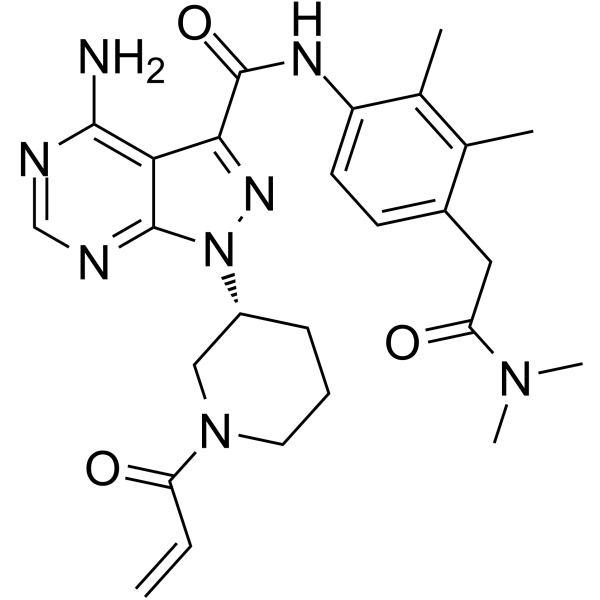
-
GC32752
TAS6417
TAS6417 (CLN-081) is a highly effective, orally active and pan-mutation-selective EGFR tyrosine kinase inhibitor with a unique scaffold fitting into the ATP-binding site of the EGFR hinge region, with IC50 values ranging from 1.1-8.0 nM.
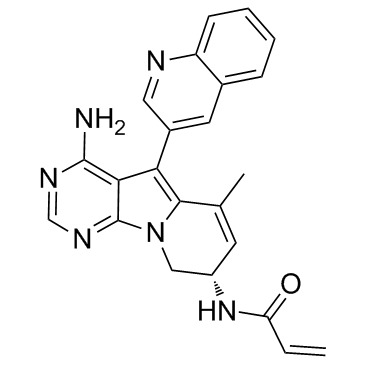
-
GC41577
Tephrosin (synthetic)
Tephrosin (synthetic) is a natural rotenoid which has potent antitumor activities. Tephrosin (synthetic) induces degradation of of EGFR and ErbB2 by inducing internalization of the receptors.

-
GC31752
Tesevatinib (XL-647)
Tesevatinib (XL-647) (XL-647; EXEL-7647; KD-019) is an orally available, multi-target tyrosine kinase inhibitor; inhibits EGFR, ErbB2, KDR, Flt4 and EphB4 kinase with IC50s of 0.3, 16, 1.5, 8.7, and 1.4 nM.
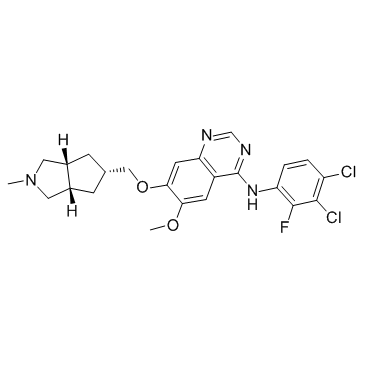
-
GC38081
Theliatinib
Theliatinib (Xiliertinib) is a potent, ATP-competitive, orally active and highly selective EGFR inhibitor with a Ki of 0.05 nM and an IC50 of 3 nM. Theliatinib has an IC50 of 22 nM for EGFR T790M/L858R mutant. Theliatinib shows >50-fold selectivity for EGFR than other kinases. Anti-tumor activity.

-
GC34215
Trastuzumab (Anti-Human HER2, Humanized Antibody)
Trastuzumab (Anti-Human HER2, Humanized Antibody) is a humanized IgG1 monoclonal antibody for patients with invasive breast cancers that overexpress HER2. Trastuzumab (Anti-Human HER2, Humanized Antibody) has the potential for HER2 Positive Metastatic Breast Cancer and HER2 Positive Gastric Cancer research.

-
GC61473
Trastuzumab deruxtecan
Trastuzumab deruxtecan (DS-8201a) (solution) is an anti-human epidermal growth factor receptor 2 (HER2) antibody-drug conjugate (ADC). Trastuzumab deruxtecan is composed of a humanized anti-HER2 antibody, an enzymatically cleavable peptide-linker, and a topoisomerase I inhibitor. Trastuzumab deruxtecan can be used for the research of HER2-positive breast cancer and gastric cancer.
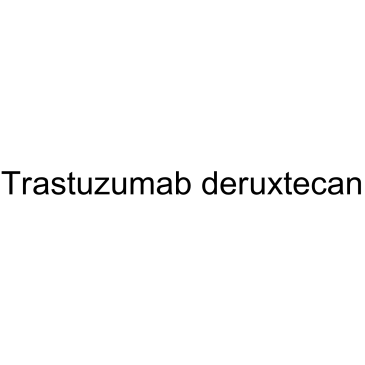
-
GC61490
Trastuzumab emtansine
Trastuzumab emtansine (Ado-Trastuzumab emtansine) is an antibody-drug conjugate (ADC) that incorporates the HER2-targeted antitumor properties of trastuzumab with the cytotoxic activity of the microtubule-inhibitory agent DM1 (derivative of maytansine). Trastuzumab emtansine can be used for the research of advanced breast cancer.
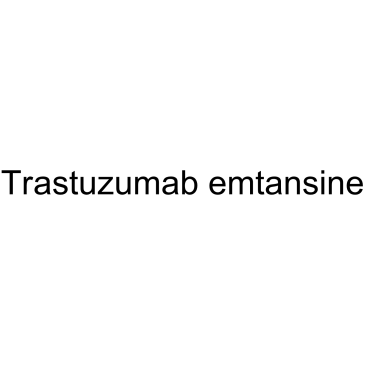
-
GC32726
Tucatinib (Irbinitinib)
Tucatinib (Irbinitinib) (Irbinitinib) is a potent, orally active and selective HER2 inhibitor with an IC50 of 8 nM.
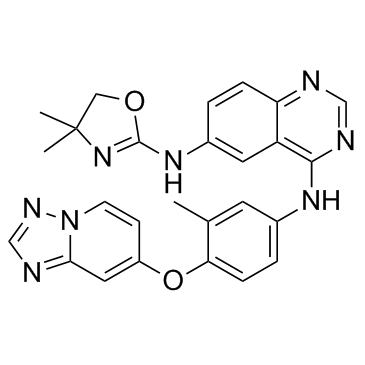
-
GC62159
Tucatinib hemiethanolate
Tucatinib (Irbinitinib) hemiethanolate is a potent, orally active and selective HER2 inhibitor with an IC50 of 8 nM.
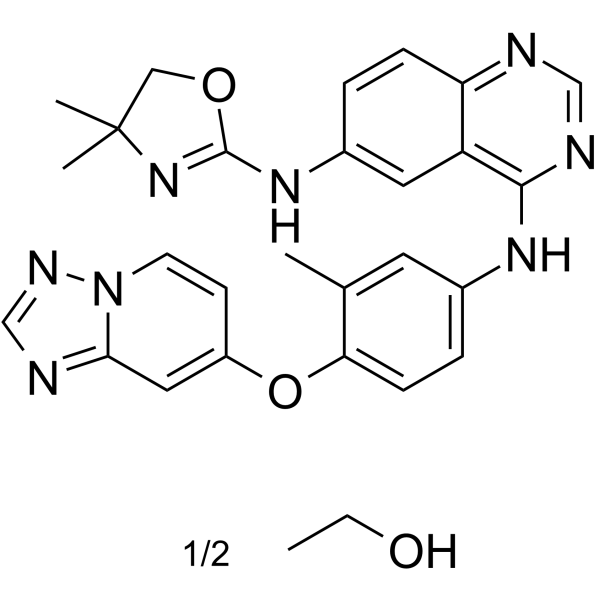
-
GC34847
TX1-85-1
An ErbB3 inhibitor
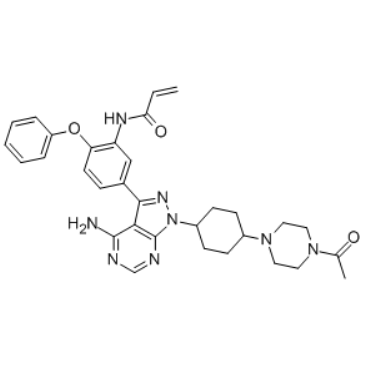
-
GC19364
Tyrphostin AG 528
Tyrphostin AG 528 is an inhibitor of EGFR and ErbB2 with IC50s of 4.9 and 2.1 uM, respectively.
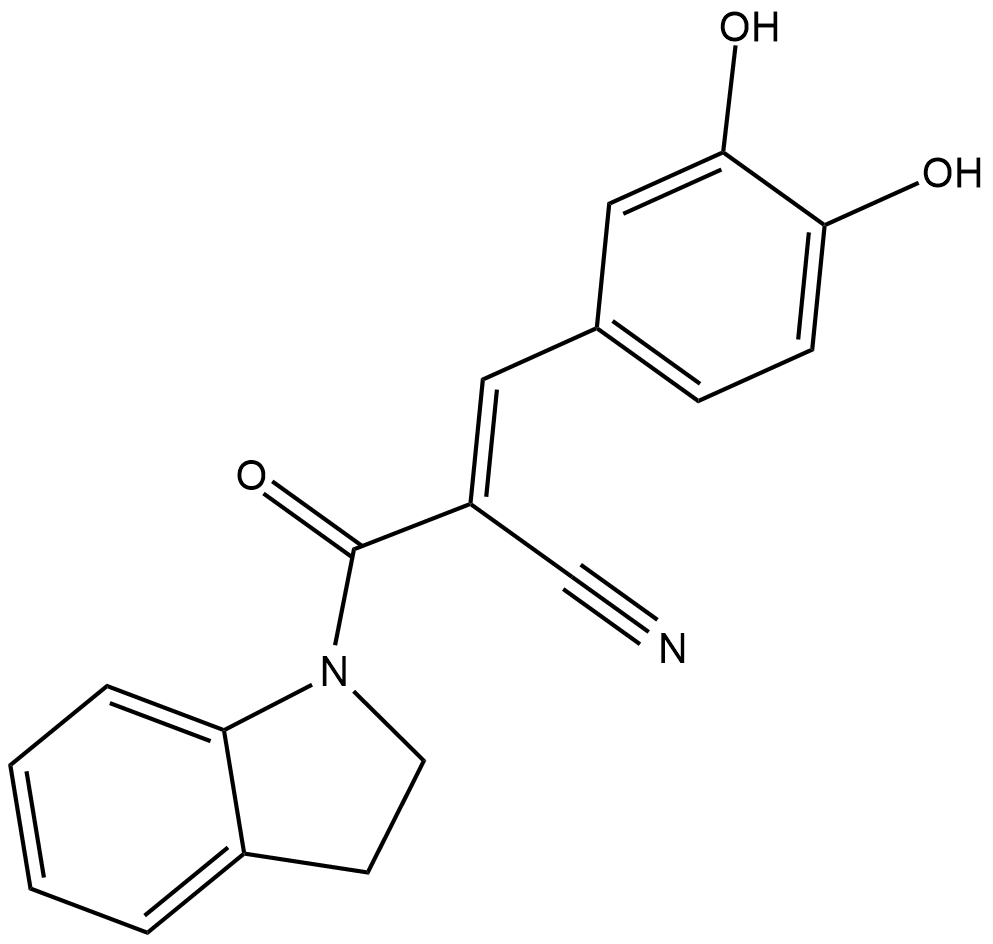
-
GC15271
Tyrphostin AG 879
HER2 inhibitor
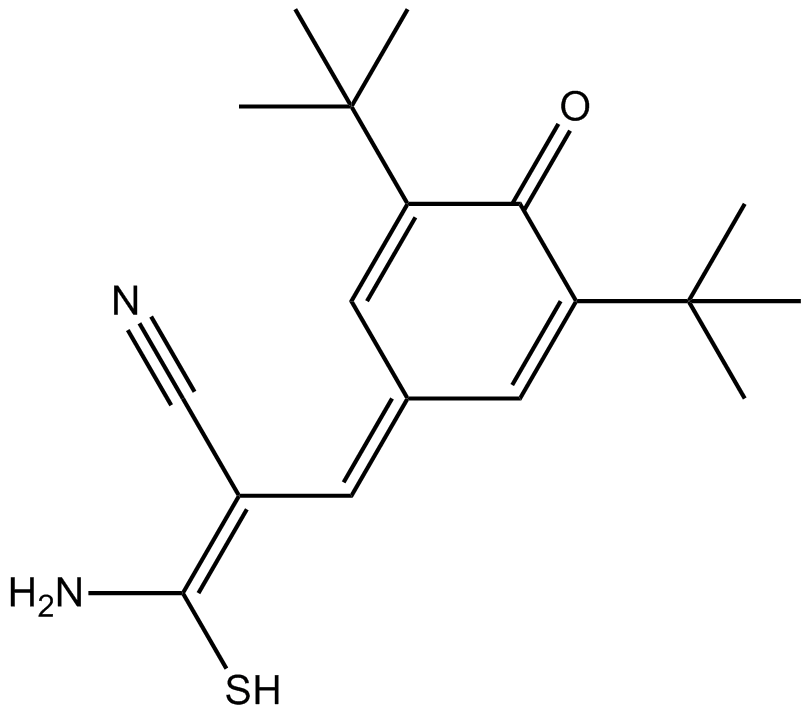
-
GC38125
Tyrphostin AG30
Tyrphostin AG30 (AG30) is a potent and selective EGFR tyrosine kinase inhibitor. Tyrphostin AG30 (AG30) selectively inhibits self renewal induction by c-ErbB, and is able to inhibit activation of STAT5 by c-ErbB in primary erythroblasts.
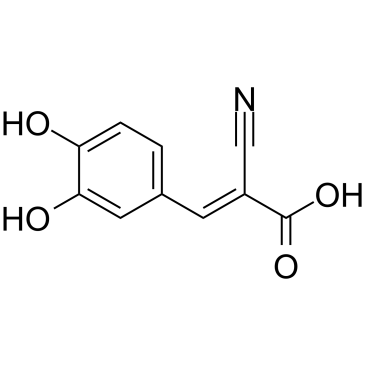
-
GC15038
Tyrphostin B44, (+) enantiomer
Tyrphostin B44, (+) enantiomer (Tyrphostin AG 835) (Compound B50) is an EGRF inhibitor with antitumor activities.
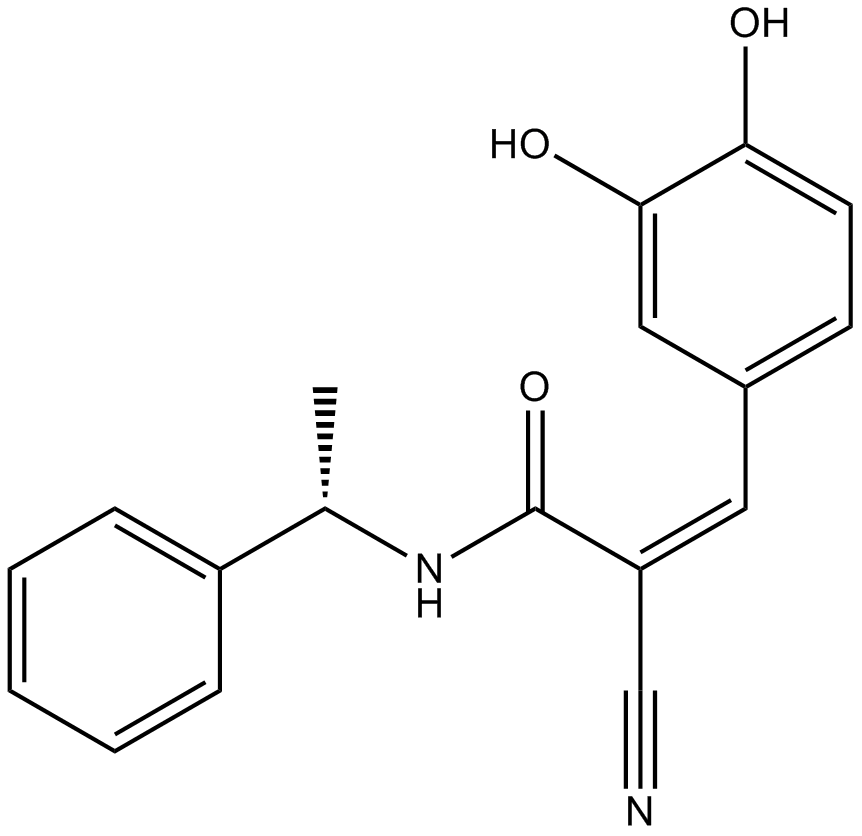
-
GC12977
Tyrphostin B44, (-) enantiomer
EGFR-kinase inhibitor
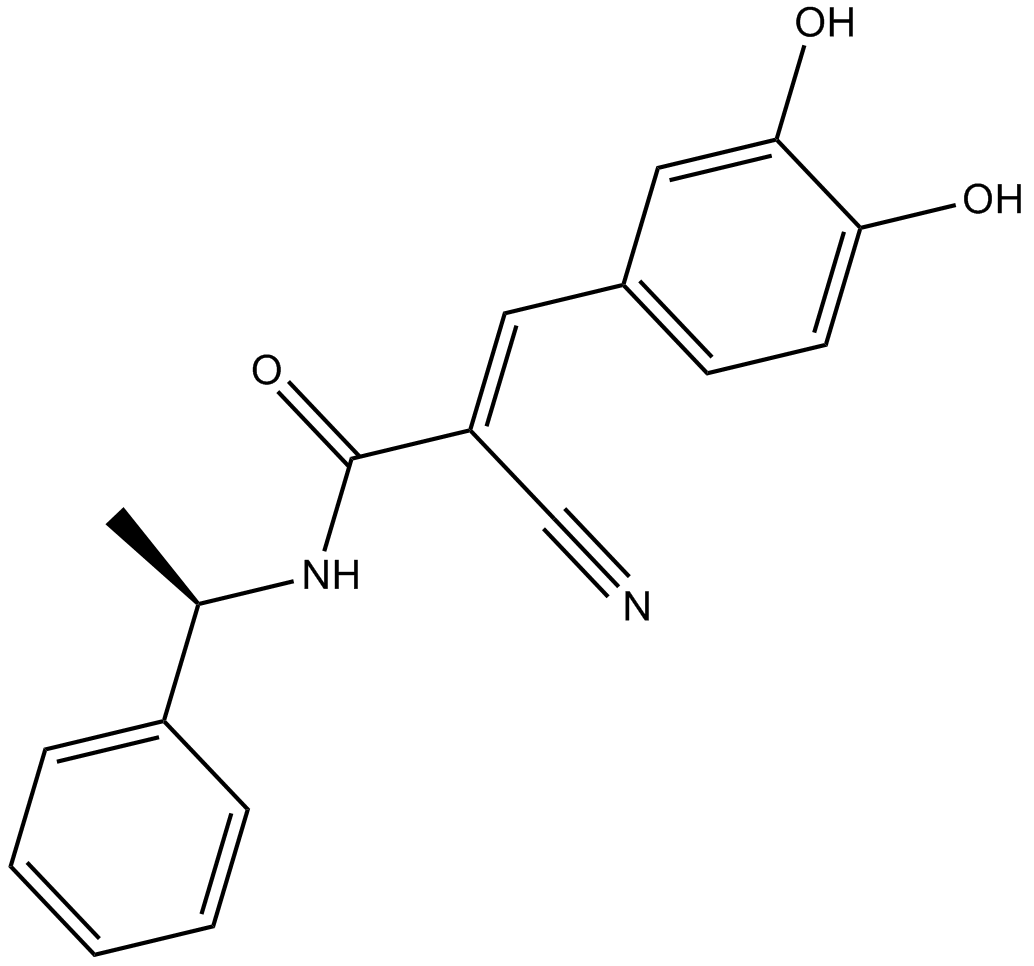
-
GC12249
Varlitinib (ARRY334543)
Varlitinib (ARRY334543) (ASLAN001) is a potent, reversible, small molecule pan-EGFR inhibitor with IC50s of 7, 2, 4 nM for HER1, HER2 and HER4, respectively.
